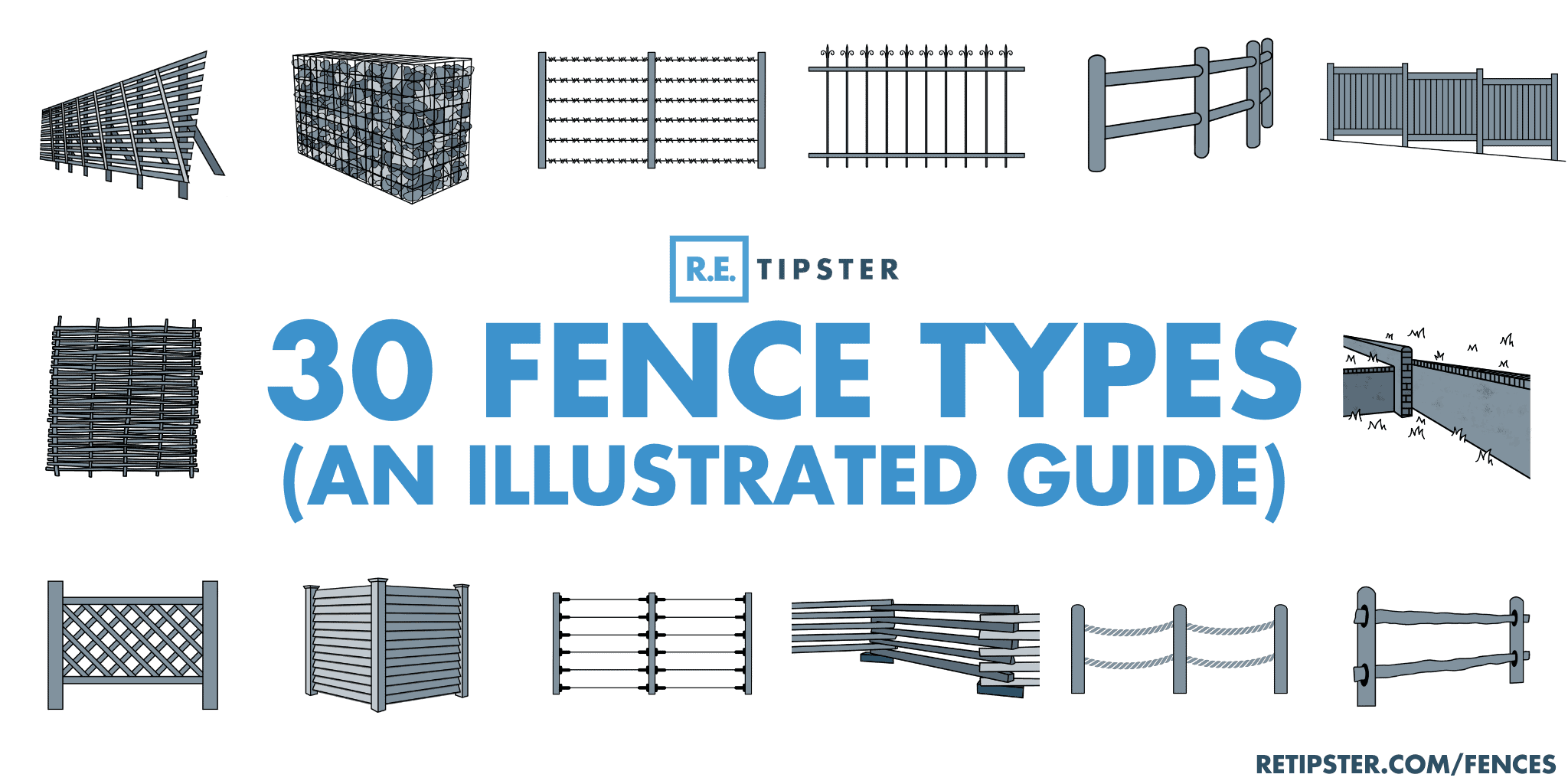
In this complete guide to common fencing types, we'll walk you through 30 different fence types that homeowners love. You'll learn:
- Which fences last the longest (and need the least maintenance);
- How to choose the perfect style for your needs and budget;
- Which fences work best for specific purposes (privacy, pets, or pure style).
Pro tip: Before you fall in love with any particular fence style, check your local building codes and HOA regulations. Now, let's find your perfect fence type!
1. Picket Fence

A picket fence typically costs between $5 and $30 per linear foot installed, and you can expect it to last 15 to 20 years if it's made of wood or over 20 years for vinyl versions. Many homeowners love picket fences because they're timeless, relatively affordable, and complement almost any home style. They're especially perfect for cottage gardens and traditional homes where you want to create a welcoming atmosphere without blocking views.
Perfect for:
- Front yards and cottage gardens
- Keeping small kids and pets contained
- Adding curb appeal without blocking views
- Creating a friendly, neighborly vibe
The Good and the Bad
While picket fences are beloved for their classic charm, they do have some limitations. They won't give you much privacy and are not ideal for security since they're easy to climb. If you choose wood, be prepared for regular maintenance—you'll need to repaint or restain every two to three years to keep it looking fresh. The height can also be an issue if you have larger dogs or live in an area with wildlife. But at least picket fences are inexpensive—the same couldn't be said for the homes it's fencing in.
Pro tip: Consider vinyl picket fencing if you love the look but hate maintenance. Modern vinyl options look surprisingly like real wood but never need painting. And if you're handy, installing a picket fence can be a weekend DIY project—just remember to call 811 before you dig to locate underground utilities.
2. Panel Fence

The genius of this fence type lies in its pre-built sections that install like a dream—which explains why contractors love them, and DIY warriors consider them a weekend-project win. These ready-made sections typically come in 6- to 8-foot lengths and various heights, perfect for privacy or decorative use.
Perfect for:
- Quick installations and DIY projects
- Clean, contemporary designs
- Properties needing consistent fence appearance
- Areas where traditional post-by-post installation is challenging
- Homeowners who want options without custom pricing
The Good and the Bad
Panel fencing offers incredible versatility and typically faster installation than traditional fence building, but there's a catch—the pre-made panels can be less forgiving on uneven terrain, and standard panel sizes might limit customization options. While higher-end materials like composite or aluminum panels can last decades with minimal care, they'll take a bigger bite out of your budget upfront.
Pro tip: When choosing panel material, consider your local climate. Wood panels love mild climates, composite conquers humidity, metal masters the heat, and vinyl vanquishes the cold. And always buy one extra panel—you'll thank yourself later if you need a replacement section.
3. Lattice Fence

While full lattice fence styles typically stand 4 to 6 feet tall, you'll often see lattice panels used as decorative toppers on privacy fences or as elegant garden dividers. The pattern's open weave creates a sense of separation without feeling claustrophobic, like hanging lace curtains for your garden.
Perfect for:
- Garden enthusiasts who love climbing plants
- Creating semi-private outdoor rooms
- Adding visual interest to plain fencing
- Concealing pool equipment or AC units
- Mediterranean or cottage-style homes
The Good and the Bad
Lattice fencing excels as a support structure for climbing plants and adds instant charm to any garden setting. However, the open pattern means limited privacy unless combined with mature plantings, and the intricate design can make repairs more challenging. While vinyl versions are maintenance-free, wooden lattice requires regular upkeep to prevent rot, especially where vines create constant moisture against the wood.
Pro tip: When planning for climbing plants, install your lattice fence at least 6 inches away from walls or structures to allow for proper air circulation. This prevents moisture buildup and gives your climbing plants room to weave through both sides of the lattice.
4. Horizontal Fence
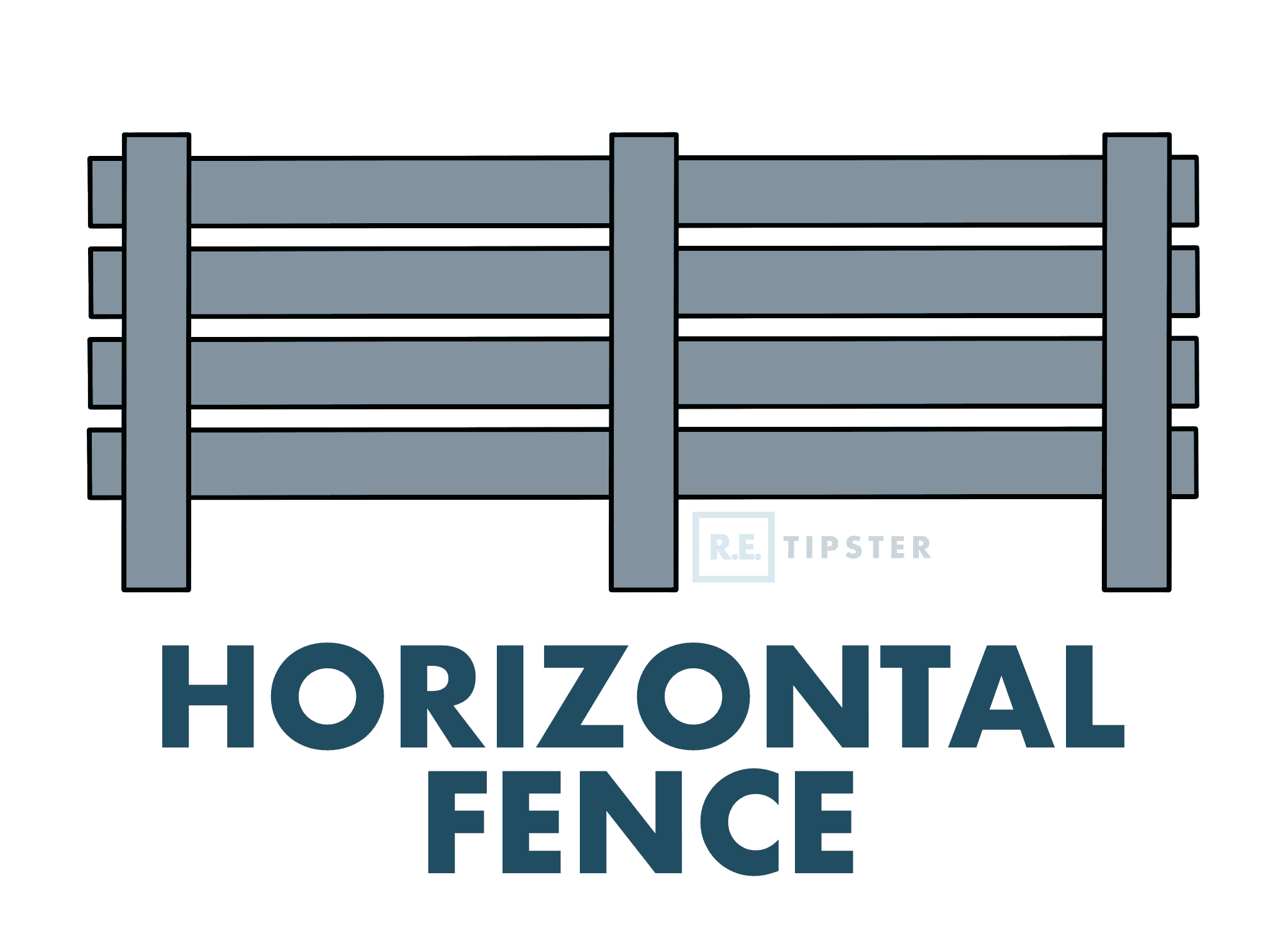
Available in wood, composite, or metal, horizontal fences typically stand 4 to 8 feet tall and can be spaced to provide anything from full privacy to decorative boundary marking. The versatility of this style has made it especially popular in urban and suburban areas where homeowners want their fence to be as much about style as function.
Perfect for:
- Modern and contemporary homes
- Making small yards appear larger
- Creating an upscale look
- Privacy with a designer touch
- Outdoor living spaces and entertainment areas
The Good and the Bad
While horizontal fences offer stunning modern aesthetics and can make your yard appear wider, they come with some practical considerations. The installation requires precise leveling to prevent a wavy appearance, and the horizontal boards can potentially be used as a ladder by adventurous kids or unwanted visitors. Plus, wood versions need regular maintenance to prevent sagging over time, though composite and metal options eliminate this concern.
Pro tip: If you're installing a horizontal fence on sloped ground, consider a stepped design rather than following the slope. It's easier to install, looks more intentional, and helps maintain those crisp, modern lines that make horizontal fences so appealing.
5. Stepped Fence
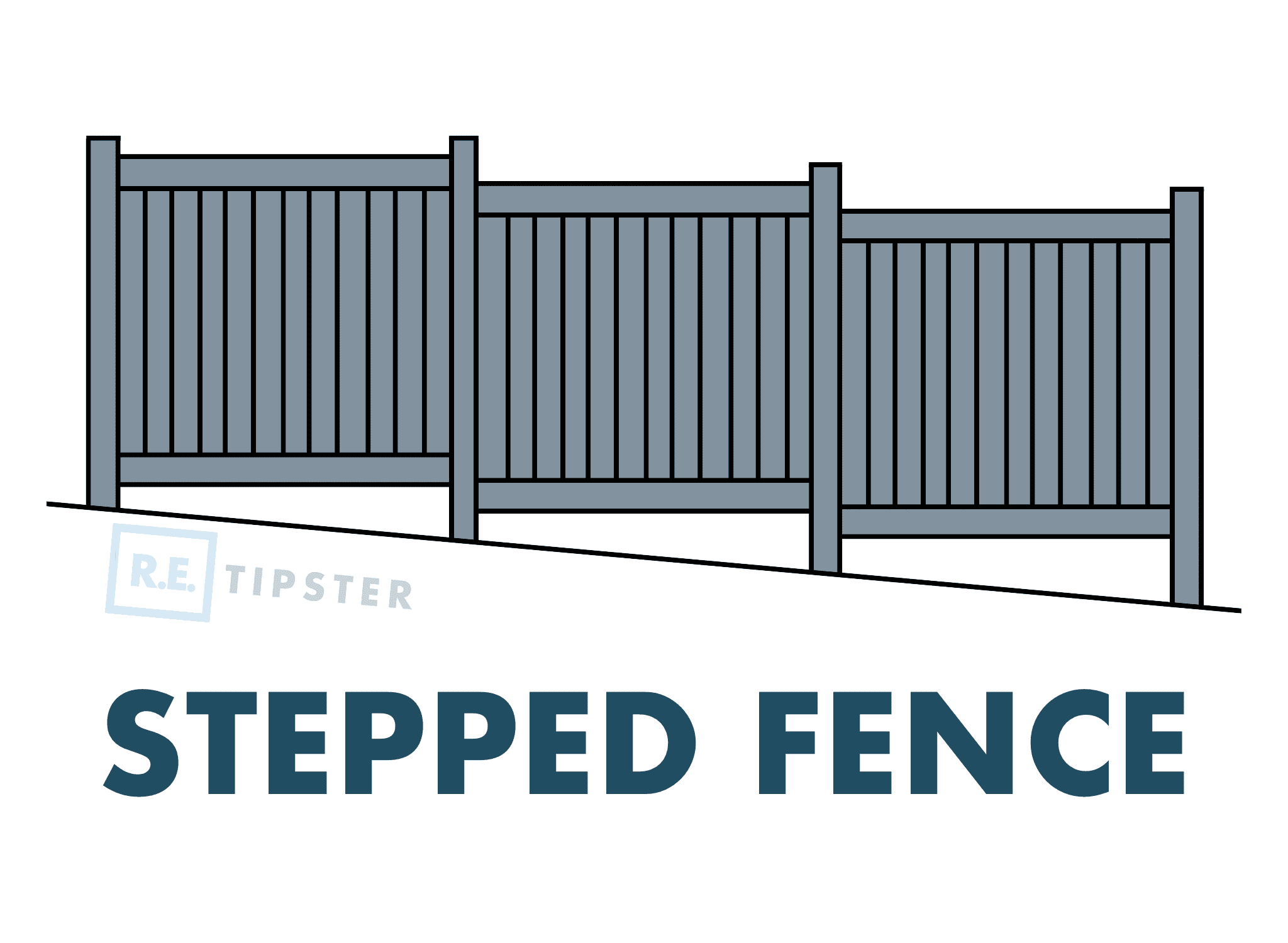
Think of stepped fencing as a series of individual fence sections, each installed level but at different heights, creating a stair-step effect that follows your property's natural contours. While any fence style can be stepped, privacy and board-and-batten designs are particularly popular for this application.
Perfect for:
- Sloped properties
- Hillside homes
- Terraced gardens
- Properties with elevation changes
- Areas where standard fencing looks awkward
The Good and the Bad
Stepped fencing offers a clean, professional solution for sloped terrain while creating visual interest through its geometric design. However, the stepping effect can leave small triangular gaps under each section that may need additional covering, and the design requires more planning and precise measurements than traditional straight-run fencing.
Pro tip: Plan your step intervals based on both the slope grade and standard panel lengths—typically 6 or 8 feet. Aim to keep the drops between sections no larger than 6 to 8 inches for the most pleasing appearance. Consider adding decorative caps to the posts to draw attention to the intentional stepping pattern. For more information on how to negotiate slope in real estate development, check out our guide, Slope Savvy: Navigating the Ups and Downs of Hillside Construction.
6. Louvered Fence
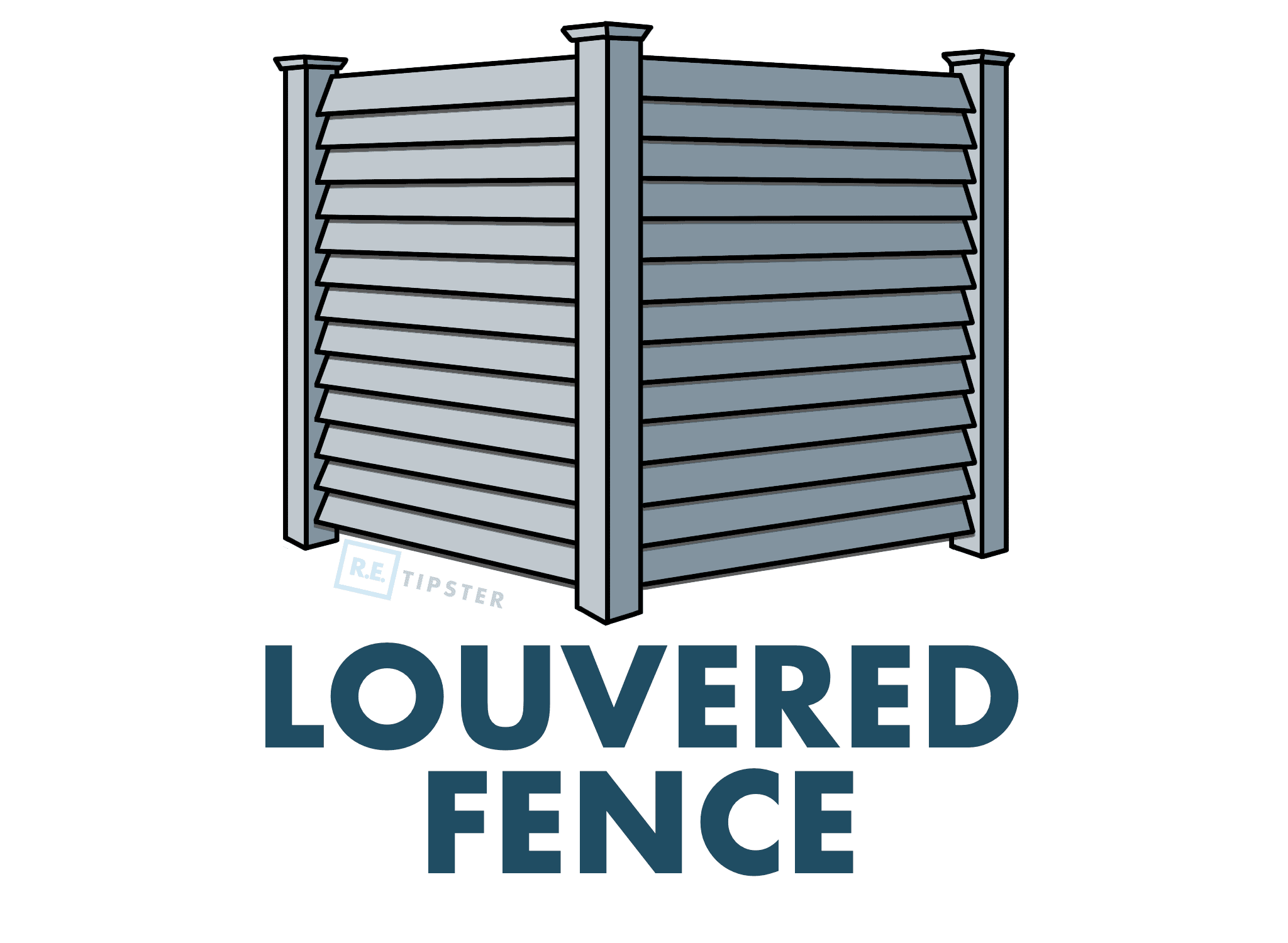
Originally inspired by plantation shutters, these fences offer customizable privacy—the angle and spacing of the slats can be adjusted during installation to control exactly what's visible and what's not. Some high-end versions even feature adjustable louvers that can be repositioned like giant outdoor blinds.
Note that some louvered fence types may be considered “niche” products and would therefore be sold in panels, of which there are wood, vinyl, and aluminum varieties.
Perfect for:
- Modern and contemporary homes
- Urban properties needing directional privacy
- Outdoor living spaces
- Properties in hot climates needing airflow
- Areas where total privacy feels too imposing
The Good and the Bad
Louvered fencing provides sophisticated directional privacy and excellent ventilation while creating interesting shadow patterns throughout the day. However, the complex design makes installation costs higher than traditional privacy fences, and the numerous moving parts in adjustable versions require regular maintenance to keep functioning smoothly.
Pro tip: When designing your louvered fence, consider the sun's path throughout the day and angle your slats to provide shade during the hottest hours while maintaining winter solar gain. For coastal areas, specify marine-grade hardware to prevent corrosion in the joints and connections.
7. Privacy Fence

Costing around $26 per linear foot installed (nationwide average), privacy fences transform any backyard into a secluded sanctuary. They're perfect for blocking both nosy neighbors and street noise while providing a safe space for families to truly relax.
Perfect for:
- Families who want a secure space for kids and pets
- Urban and suburban homes with close neighbors
- Creating an outdoor entertainment space
- Blocking street noise and wind
- Adding value to your property
The Good and the Bad
Privacy fences excel at creating your own personal oasis, effectively blocking noise and providing complete seclusion for outdoor activities. However, these tall barriers can make small yards feel cramped, and their solid panels can act like sails in strong winds, requiring extra-sturdy installation. Wood versions also need regular maintenance to stay looking fresh, making vinyl or composite options worth considering for lower long-term upkeep.
Pro tip: If wood as a fence material is your jam, choose pressure-treated lumber for the posts and bottom boards to prevent rot and double its lifespan. If you live in a windy area, consider a shadowbox style instead of solid panels to reduce wind pressure while maintaining privacy.
8. Shadowbox Fence

The alternating board design does more than just look good—it allows refreshing breezes to flow through while still maintaining privacy when viewed straight on. This makes shadowbox fence types particularly popular in regions with strong winds or hot summers where air circulation is crucial.
Perfect for:
- Neighbors who want to share fence costs
- Areas with strong winds
- Homeowners seeking partial privacy
- Properties where both sides of the fence are visible
- Creating an upscale, architectural look
The Good and the Bad
Shadowbox fences offer an elegant compromise between privacy and airflow, with the unique bonus of looking identical from both sides—perfect for shared property lines. However, the extra materials needed make them pricier than standard privacy fences, and installation requires precise measurements to maintain consistent spacing. Some homeowners also find that the partial visibility through angled gaps doesn't provide quite enough privacy or noise reduction for their needs.
Pro tip: To maximize privacy while maintaining the shadowbox look, ask your contractor about using slightly wider boards or adjusting the overlap depth. Just remember that more overlap means less airflow, so find the right balance.
9. Board-and-Batten Fence
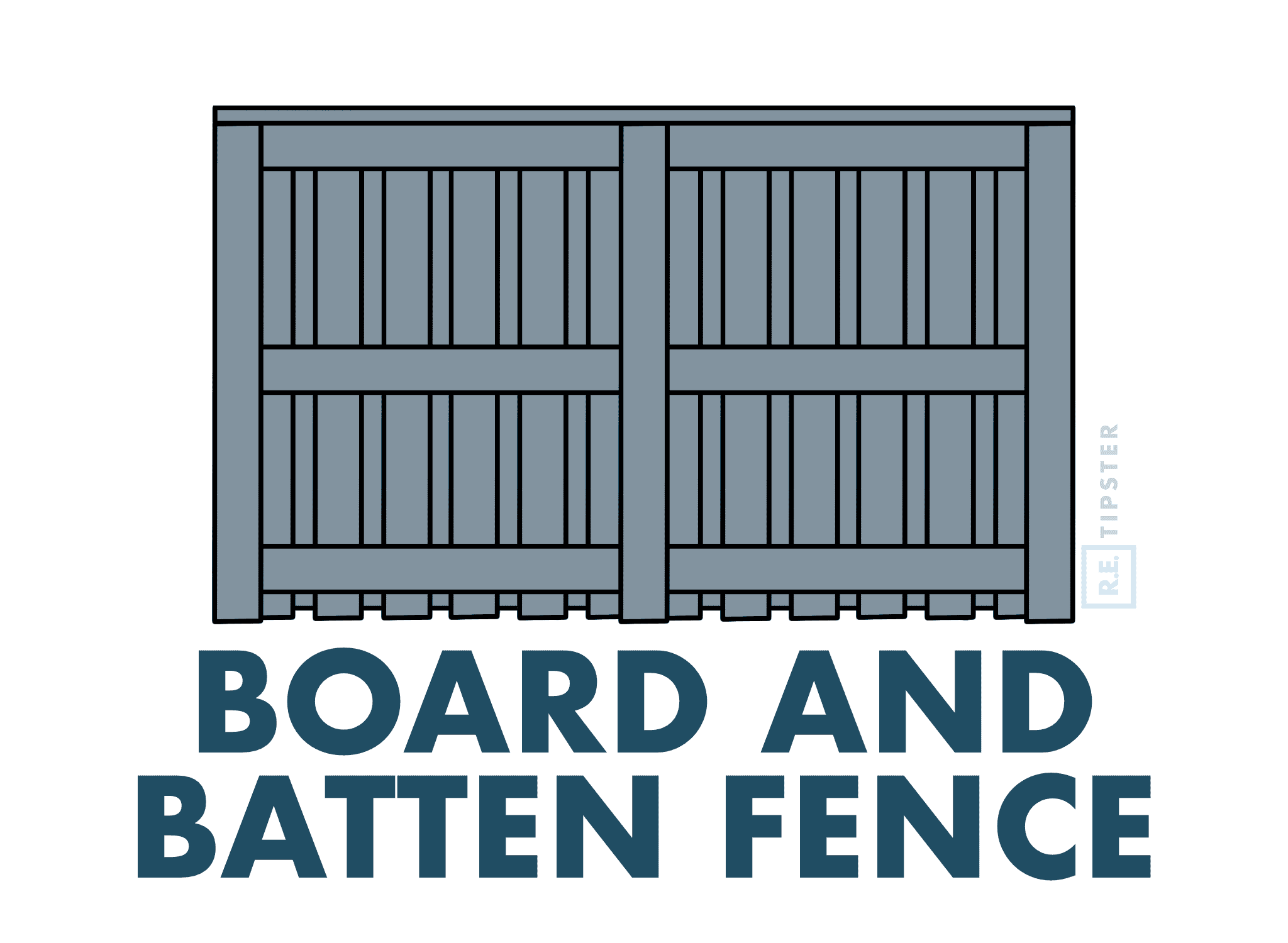
Unlike its cousin, the shadowbox fence, board-and-batten creates a more formal appearance with its rhythmic pattern of wide and narrow boards. The board-and-batten design offers complete percent visual privacy, whereas the shadowbox design, which allows some visual exposure, is only semi–private.
Perfect for:
- Modern farmhouse styles
- Architectural statements
- Properties needing full privacy
- Contemporary homes
- Custom design projects
The Good and the Bad
Board-and-batten fencing provides excellent privacy while creating interesting visual texture through shadow play, and its vertical lines can make spaces feel larger. However, the design requires more lumber than standard privacy fences, precise installation is crucial for proper appearance, and wood versions need regular maintenance to prevent warping that can disrupt the pattern.
Pro tip: When designing your board-and-batten fence, play with board widths to create custom patterns. Traditional designs use 1×4 battens over 1×8 boards, but varying these dimensions can create unique effects. For best results, install vertical boards with a slight gap at the bottom to prevent rot and promote air circulation.
10. Bamboo Fence

Perfect for:
- Tropical and Asian-inspired landscapes
- Eco-conscious homeowners
- Quick privacy solutions
- Modern zen gardens
- Poolside screening
The Good and the Bad
Bamboo fencing offers unmatched sustainability and a unique aesthetic that sets your yard apart, but it comes with some tropical-sized caveats. Despite its exotic and beautiful appearance, bamboo, as the high-maintenance supermodel of fencing materials, can be temperamental in harsh weather conditions. It needs regular sealing to prevent weathering, and in cold climates it can become brittle without proper treatment.
Pro tip: For longer-lasting bamboo fencing, choose panels made from black or Tonkin bamboo—they're denser and more durable than other varieties. Also, install the fence at least 2 inches off the ground to prevent moisture damage from ground contact.
11. Ranch Rail Fence

Originally developed for containing horses on high-end equestrian properties, ranch rail fencing typically features thick wooden rails (often 2×6 or larger) mounted to substantial posts, creating a robust barrier that says “serious ranching happens here” while maintaining an elegant appearance. Modern versions often incorporate wire mesh backing for added security without compromising the classic look.
Perfect for:
- Horse properties and equestrian facilities
- Upscale rural estates
- Large acreage boundaries
- Show farms and training facilities
- High-end agricultural properties
The Good and the Bad
Ranch rail fencing offers impressive durability and classic agricultural styling, with the substantial materials providing excellent containment for larger animals and clean sight lines across the property. However, the heavy materials make installation labor-intensive, maintenance requirements are significant for wooden versions, and the cost can add up quickly when fencing large areas.
Pro tip: If you're installing ranch rail fencing for horses, set your posts at least 30 inches deep and use proper post hole drainage to prevent frost heave. Consider adding electric tape along the top rail—it extends the life of your fence by discouraging horses from leaning or chewing on it.
12. Stacked Rail Fence

Instead of posts, these fences use interlocking rails stacked in alternating directions, typically 4 to 5 rails high, creating a zigzag pattern that provides its own structural support. Each intersection is carefully notched and weighted to lock the entire structure together. In general, the higher the rail, the more expensive it is.
Perfect for:
- Historic property restoration
- Pioneer-era demonstrations
- Self-sufficient homesteads
- Properties with abundant timber
- Areas where traditional post installation is difficult
The Good and the Bad
Stacked rail fences require no posts or hardware and can be built entirely from split logs, making them ideal for remote locations or historic reconstructions. However, they require significant land area due to their zigzag layout, need careful assembly to remain stable, and consume more lumber than traditional rail fences.
Pro tip: When building a stacked rail fence, always lay the largest, straightest rails on the bottom and save curved pieces for upper rails. The zigzag pattern should form roughly 120- to 130-degree angles at the corners for maximum stability—too wide or too narrow and the fence becomes unstable.
13. Split Rail Fence
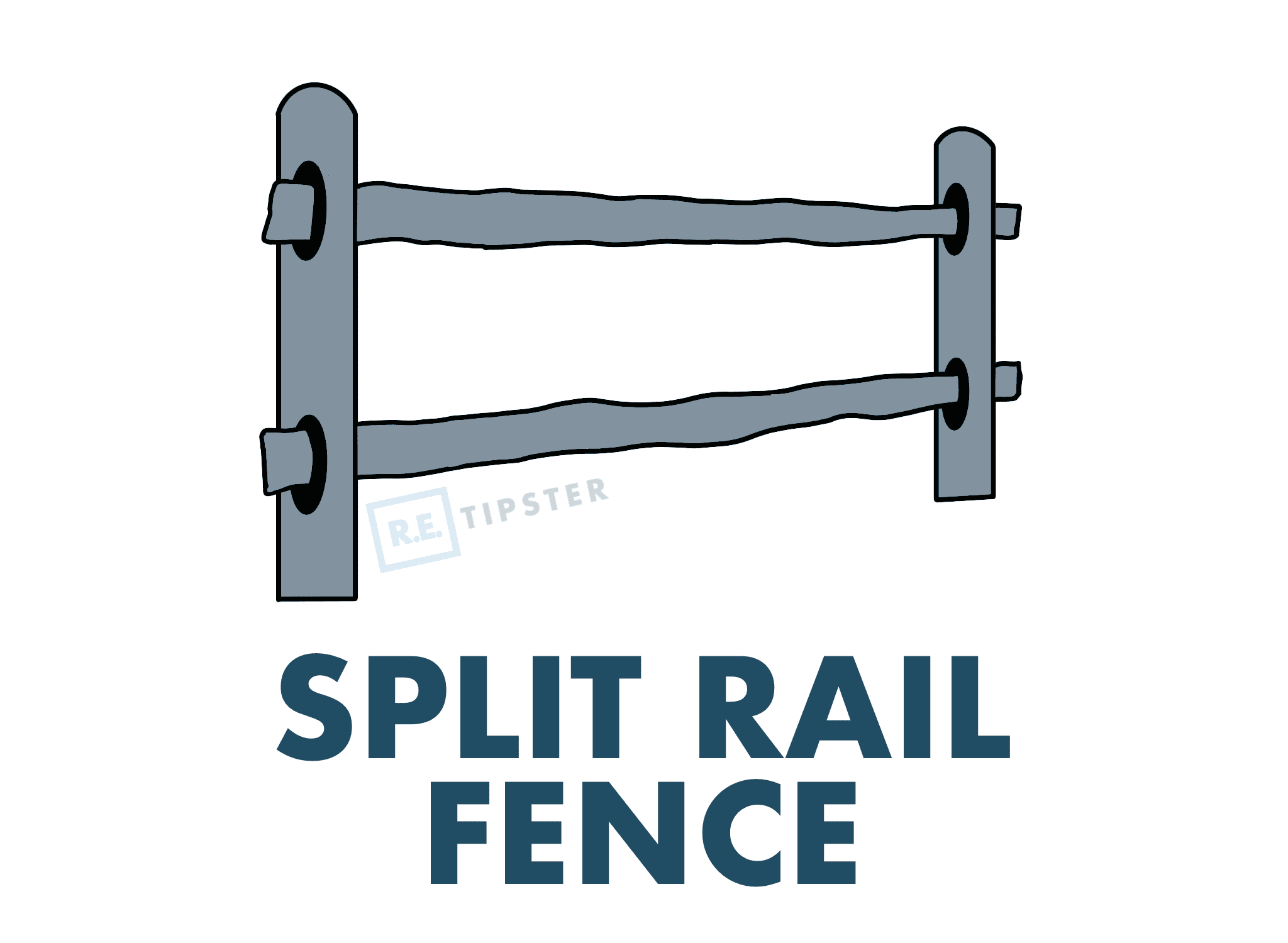
Standing 3-5 feet high, split rail fences create clear boundaries without blocking views or feeling imposing. Their rustic appearance actually improves with age, making them one of the few fencing styles where weathering adds to their charm rather than detracting from it.
Perfect for:
- Rural properties and farmhouses
- Large lots needing boundary markers
- Ranch-style homes
- Properties where views matter
- Areas where wildlife is welcome
The Good and the Bad
Split rail fences offer unbeatable rustic charm and cost-effectiveness, with minimal maintenance required—you won't need to paint or stain them unless you want to. However, they provide virtually no privacy or security, and the spaces between rails mean they're not suitable for containing small pets or children without adding wire mesh backing. Their distinctly country look might also feel out of place in urban or formal landscapes.
Pro tip: Consider adding welded wire mesh between the rails if you need to contain animals while maintaining the rustic character. The dark-colored wire becomes nearly invisible from a distance while adding functionality to your fence.
14. Post-and-Rail Fence
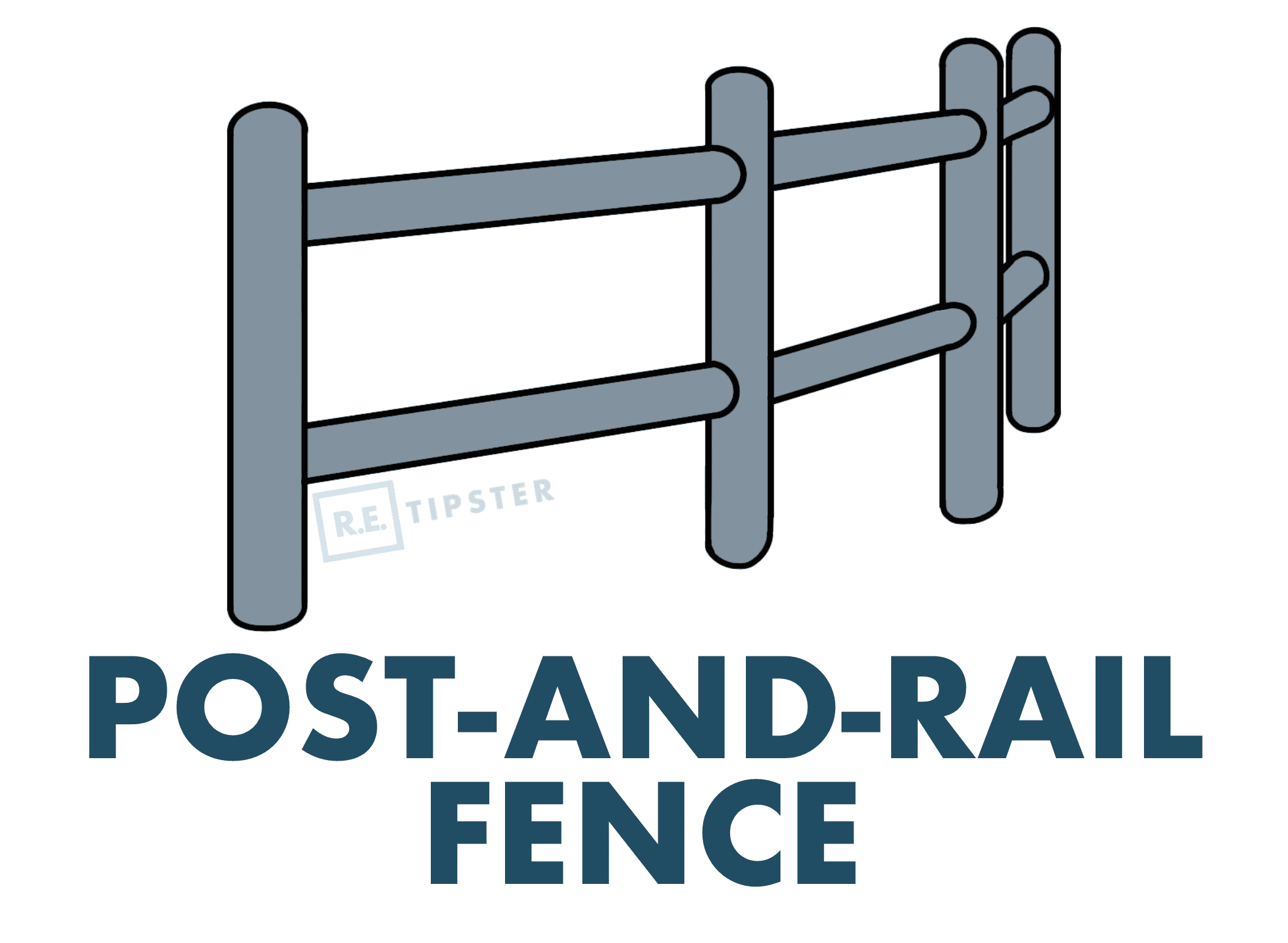
Traditional designs feature 2 to 4 rails and stand about 4 to 5 feet high, though horse properties often opt for taller versions. You'll often see this classic style in rural America, where it frames rolling pastures and training grounds with understated elegance.
Perfect for:
- Horse properties and hobby farms
- Large estates and acreage
- Historic homes and properties
- Creating open sight lines
- Defining boundaries without obstruction
The Good and the Bad
Post-and-rail fencing offers incredible durability and timeless appeal, with minimal maintenance required beyond occasional rail replacement. The downside? It provides zero privacy and limited security—the wide gaps between rails mean you'll need additional wire mesh if you're containing smaller animals. And while its rustic charm works beautifully in country settings, it can look out of place in more urban environments.
Pro tip: Consider black-coated wire mesh between the rails instead of traditional galvanized—it virtually disappears from a distance while adding functionality. And if you're going for authentic period charm, rough-sawn locust or cedar posts will weather beautifully without requiring treatment.
15. Cross-Buck Fence

Popularized by American ranchers who needed something stronger than basic post-and-rail but less intense than full privacy fencing, cross-buck designs now grace everything from suburban front yards to high-end equestrian facilities. The signature X pattern between rails creates visual interest while actually making the fence structurally stronger.
Perfect for:
- Ranch-style homes
- Country estates
- Front yard decorative fencing
- Equestrian properties
- Semi-private boundaries
The Good and the Bad
Cross-buck fencing offers distinctive curb appeal and superior stability compared to basic post-and-rail designs, while the open pattern maintains views and airflow. However, the decorative X-braces require more materials and labor than simpler styles, and the design provides minimal privacy—plus, those diagonal cuts can make repairs more challenging for DIY enthusiasts.
Pro tip: For authentic ranch styling, paint your cross-buck fence white or off-white, and consider adding a top rail that extends slightly beyond each post. If you're installing near horses, reinforce the X-braces with carriage bolts rather than just nails or screws—they'll hold up better to curious equine neighbors.
16. Farm/Field Fence
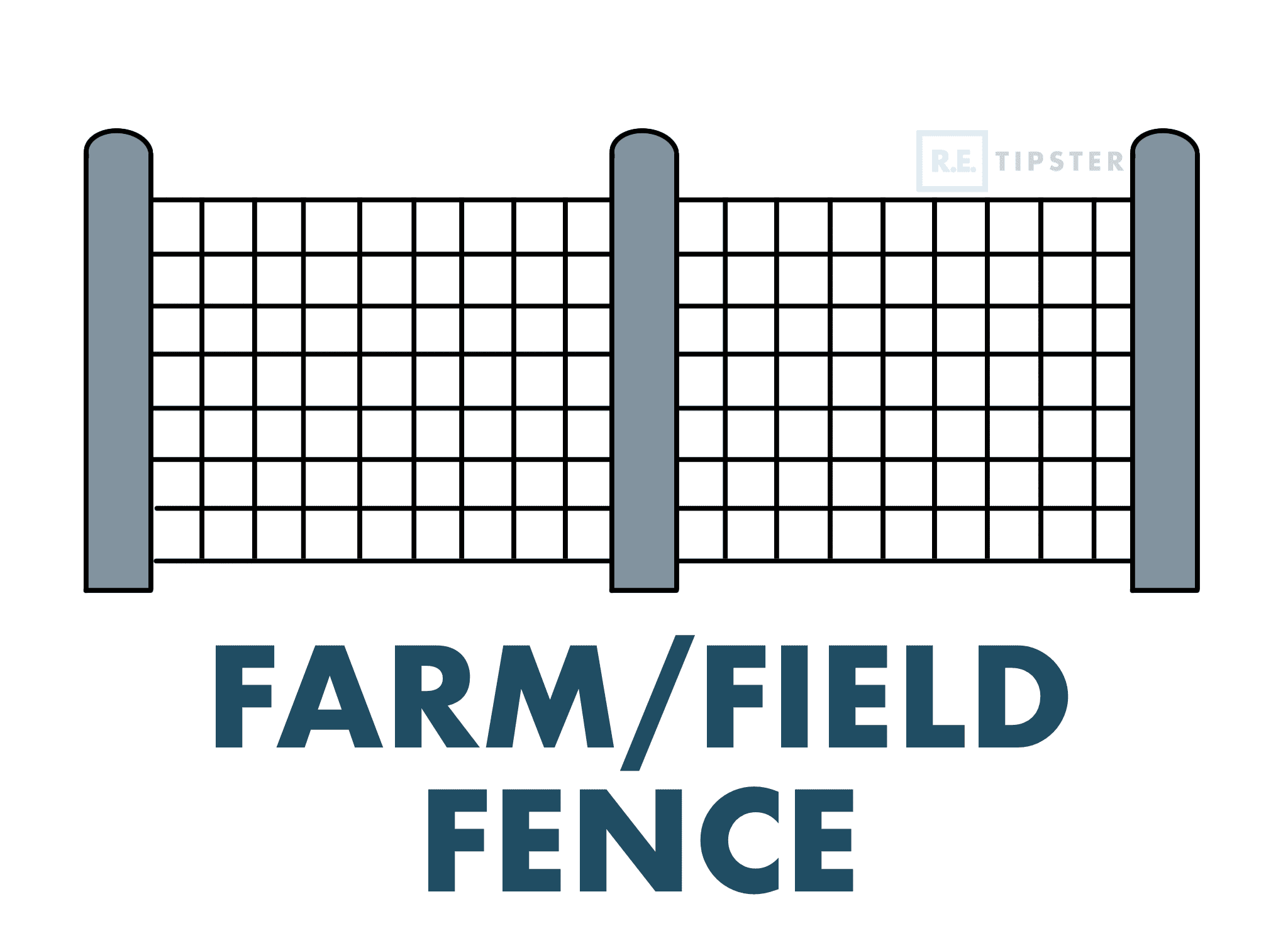
These woven wire fences typically stand 4 to 5 feet tall and often feature a barbed wire top row for extra security. They've been keeping livestock safe and contained since the early 1900s, and modern versions still follow the same tried-and-true design. This is also useful as a placeholder fence if you're still thinking of a creative use for your vacant land.
Perfect for:
- Livestock containment
- Large agricultural properties
- Horse pastures
- Hobby farms
- Mixed animal enclosures
The Good and the Bad
Farm fencing offers exceptional versatility and durability at a reasonable price point, effectively containing various types of livestock while requiring minimal maintenance. However, the utilitarian appearance isn't suitable for residential areas, and the galvanized coating can eventually wear off in harsh conditions, leading to rust if not monitored—plus, installation requires proper tensioning to prevent sagging over time.
Pro tip: When installing farm fencing, spring for high-tensile wire—it costs a bit more upfront but resists sagging and requires less maintenance over time. For areas with predator concerns, bury the bottom 8 to 12 inches of the fence or add an outward-facing ground apron.
17. Palisade Fence

Modern palisade fencing features closely spaced vertical bars (usually wrought iron or steel) with pointed or splayed tops, typically standing 6 to 10 feet tall. While medieval versions relied on sharpened tree trunks, today's palisade fences come in two flavors: industrial (commonly seen around schools and commercial properties) and ornamental (gracing historic homes and upscale properties). The latter, often called wrought iron (though most modern versions are actually welded steel), features more decorative elements like spears, scrolls, and finials that add architectural interest. Palisade fences aren't cheap, especially when you choose the more ornamental, intricate versions.
Perfect for:
- High-security commercial sites
- Schools and public facilities
- Utility installations
- Industrial properties
- Areas requiring robust perimeter security
The Good and the Bad
Palisade fencing provides exceptional security with its anti-climb design and impressive durability, while offering better visibility and airflow than solid barriers. However, the imposing appearance can feel unwelcoming in residential settings, the pointed tops pose safety concerns, and installation requires professional expertise due to the heavy materials involved. Some wrought-iron palisade fences may also need occasional touch-ups to prevent rust, although many modern versions come powder-coated with rust-resistant paint.
Pro tip: If you need palisade-level security but want to soften the look, consider powder coating in dark green or bronze—these colors blend better with landscaping. Plant thorny climbing roses or pyracantha along the fence line; they'll add another security layer while creating a more aesthetic appearance.
18. Gabion Fence
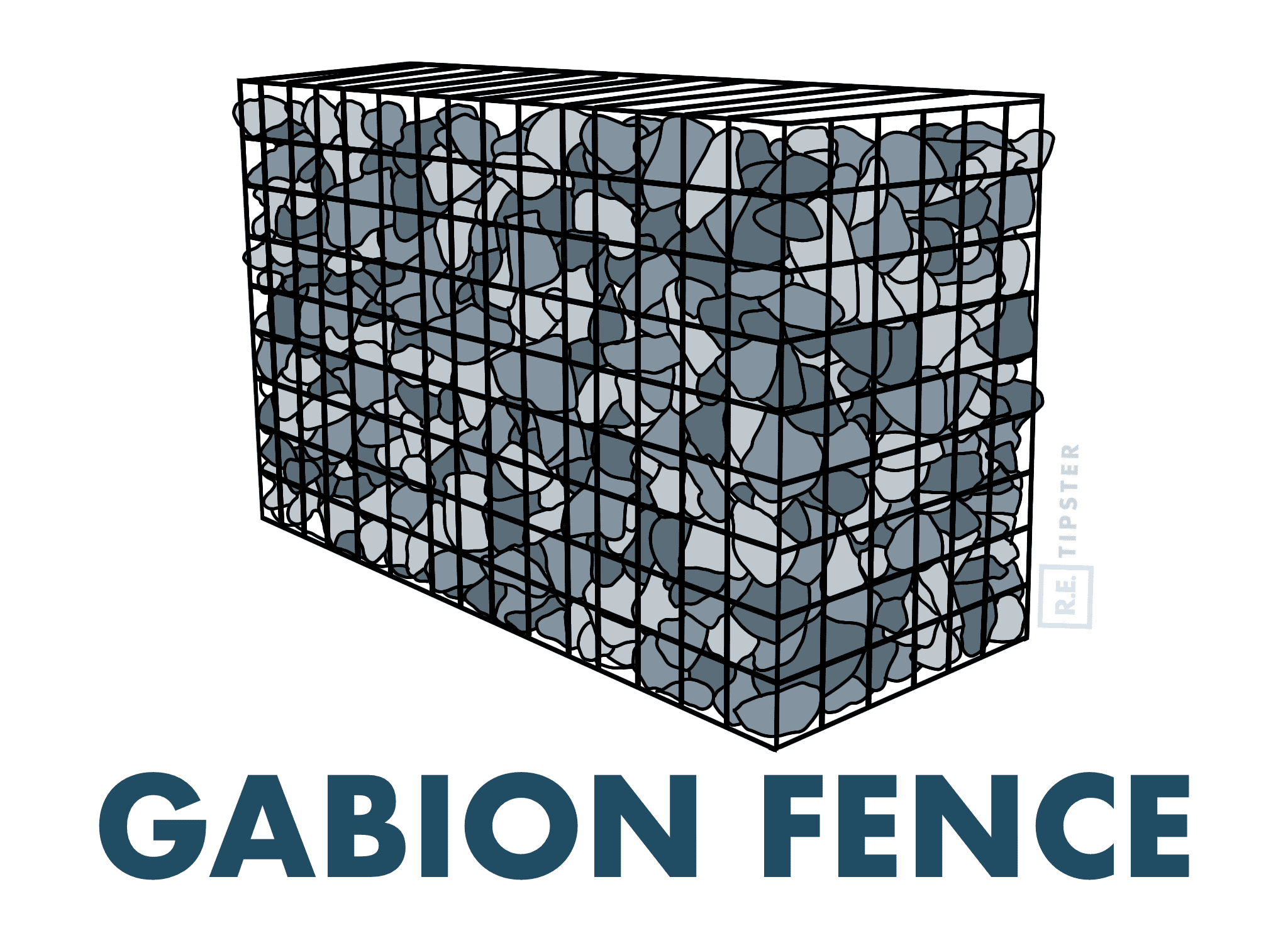
Thanks to their appearance in high-end architectural projects and upscale wineries across Napa Valley, these functional sculptures have become the darling of modern landscape design. You can fill them with anything from local river rock to colored glass. This makes each gabion have a style and identity of its own.
Perfect for:
- Modern and industrial-style homes
- Properties needing retaining walls and fencing
- Sustainable landscaping projects
- Sound barrier applications
- Creating architectural focal points
The Good and the Bad
Gabion fences offer unmatched durability and can last generations with zero maintenance, plus they provide excellent sound reduction and wind protection. However, they're heavy (we're talking really heavy—foundation-requiring heavy), installation is labor-intensive, and modifying them later is about as easy as moving a mountain.
Pro tip: Mix your fill materials for visual interest—try layering different colored stones or incorporating recycled materials like broken concrete or brick. Just make sure all materials are similar in size to prevent settling and ensure proper structural integrity.
19. Chain-Link Fence
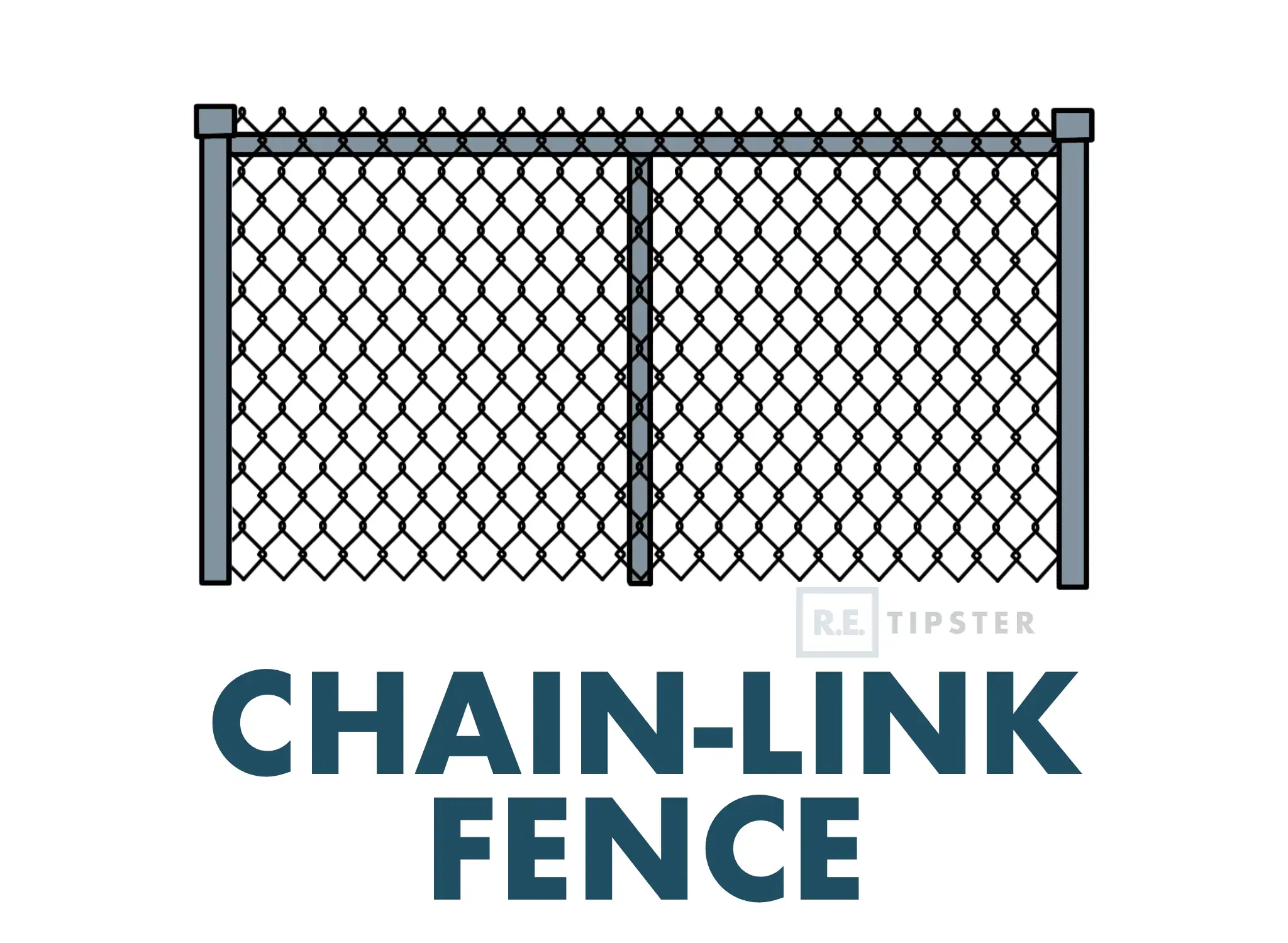
The humble chain-link has been guarding Little League fields and keeping dogs safely contained since the 1890s. And did you know that these fences were originally called “hurricane fences?” This was due to their open mesh design that lets wind pass through instead of turning your fence into an impromptu sailing vessel during storm season, especially in the South.
Perfect for:
- Budget-conscious homeowners
- Large properties needing secure boundaries
- Dog runs and pet areas
- Sports fields and playgrounds
- Industrial properties and temporary fencing
The Good and the Bad
While chain-link fences and similar fence types won't win any beauty contests, they're nearly indestructible and require practically zero maintenance—just the occasional spray with a garden hose when they get dirty. The downside? They provide zero privacy unless you add slats (which often end up looking like cheap plastic after a few years in the sun). Even worse, they can give your yard a bit of a prison-yard vibe if you're not careful with landscaping.
Pro tip: If you're stuck with a chain-link fence but hate the industrial look, consider turning it into a living wall. Fast-growing vines like clematis or jasmine can transform that metal grid into a gorgeous green backdrop within a single growing season.
20. Barbed Wire Fence
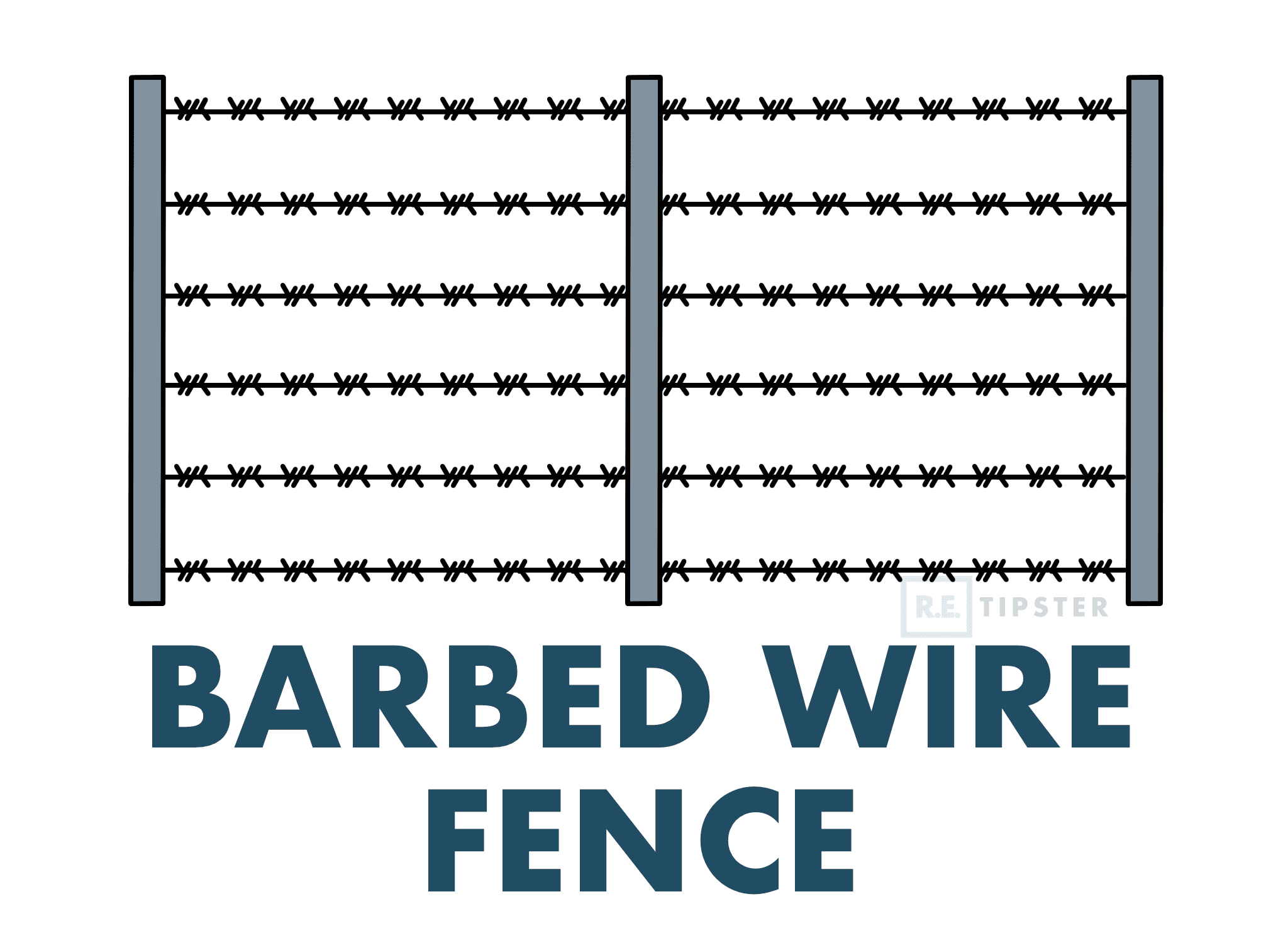
Today, at $2.5 per linear foot installed, this utilitarian fence type serves the same purpose it did 150 years ago: creating clear boundaries at minimal cost. The design remains elegantly simple: steel wire twisted with sharp barbs spaced every 4 or 5 inches, typically strung in 3 to 5 horizontal rows between metal or wooden posts.
Perfect for:
- Working ranches and farms
- Large agricultural properties
- Remote area security
- Livestock containment
- Industrial site perimeters
The Good and the Bad
Barbed wire excels at its intended purpose—it's incredibly durable, nearly maintenance-free, and effectively contains livestock while deterring trespassers. However, its aggressive appearance and potential safety risks make it unsuitable for residential areas, and wildlife encounters can be problematic.
Pro tip: Use a good pair of fencing pliers and heavy gloves when installing barbed wire—these tools are invaluable. For maximum effectiveness, maintain proper tension and check anchor posts regularly. A loose barbed wire fence is about as useful as a screen door on a submarine.
21. Electric Fence
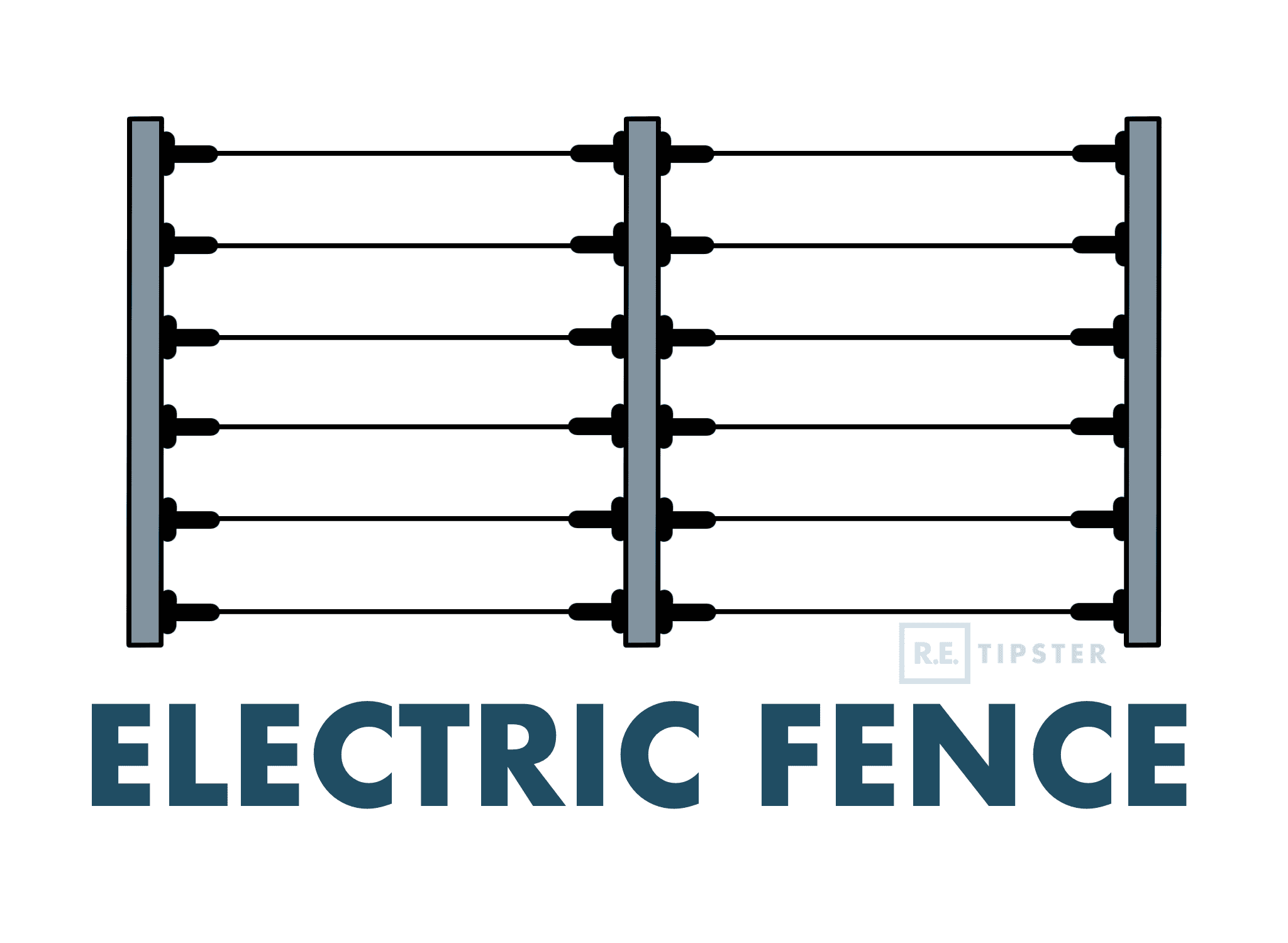
At $2 to $6 per linear foot for basic materials (plus up to $1,000 for the energizer unit of bigger properties), it's deceptively simple: electrified wires carrying a pulse of electricity strong enough to startle but not harm. Modern versions are sophisticated enough to monitor their own voltage and send alerts to your phone when there's a breach—something Dr. Hammond could have used at his park.
Perfect for:
- Livestock containment
- Garden protection from wildlife
- Security-conscious properties
- Horse paddocks and training areas
- Agricultural pest control
The Good and the Bad
Electric fencing offers unmatched psychological deterrence and flexibility in installation, requiring minimal materials for maximum effectiveness. However, it needs constant power (solar options available), regular monitoring, and clear warning signs to prevent unexpected surprises for visitors. Plus, vegetation needs regular clearing to prevent power drain.
Pro tip: Install a voltage meter at key points along your fence line. Remember: while that testing the fence with grass stems trick might work in movies, stick to proper testing equipment in real life. Your hair will thank you.





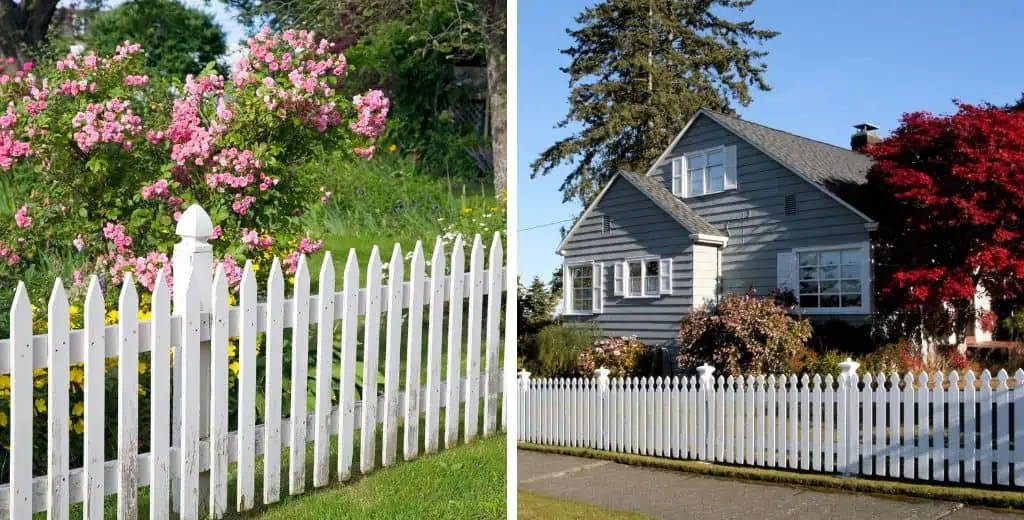



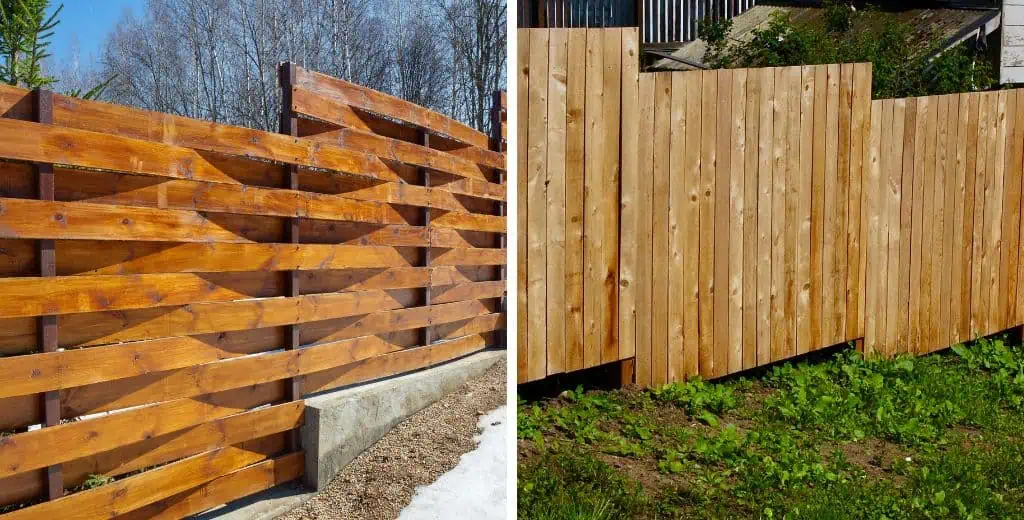


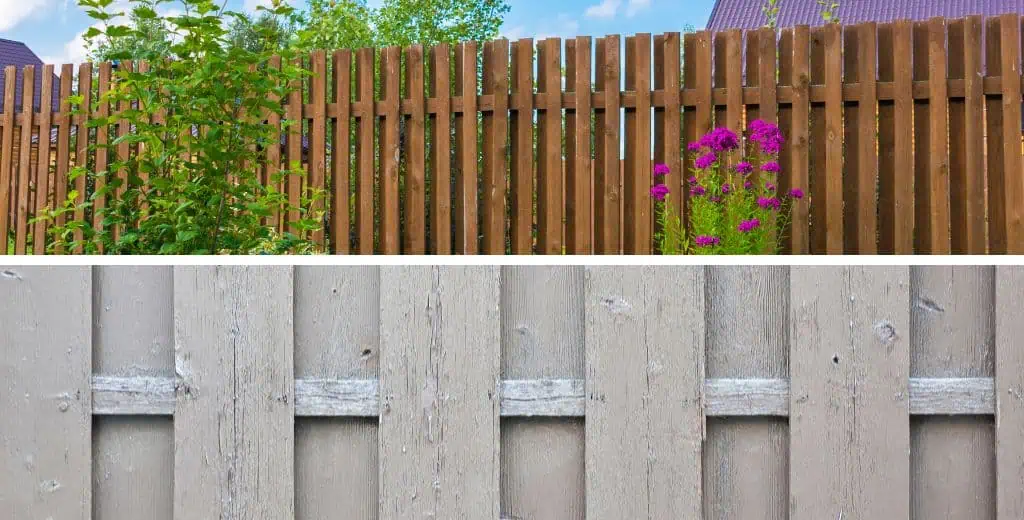
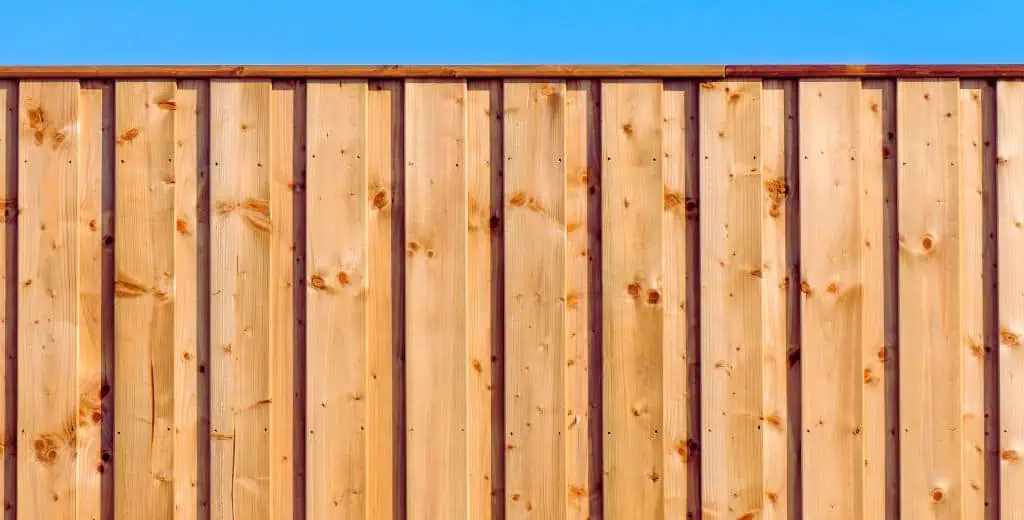

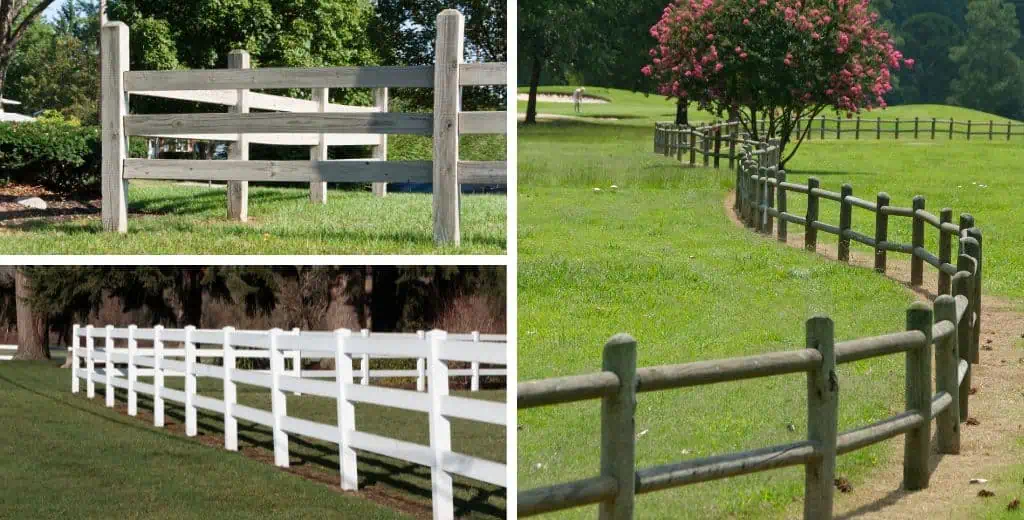

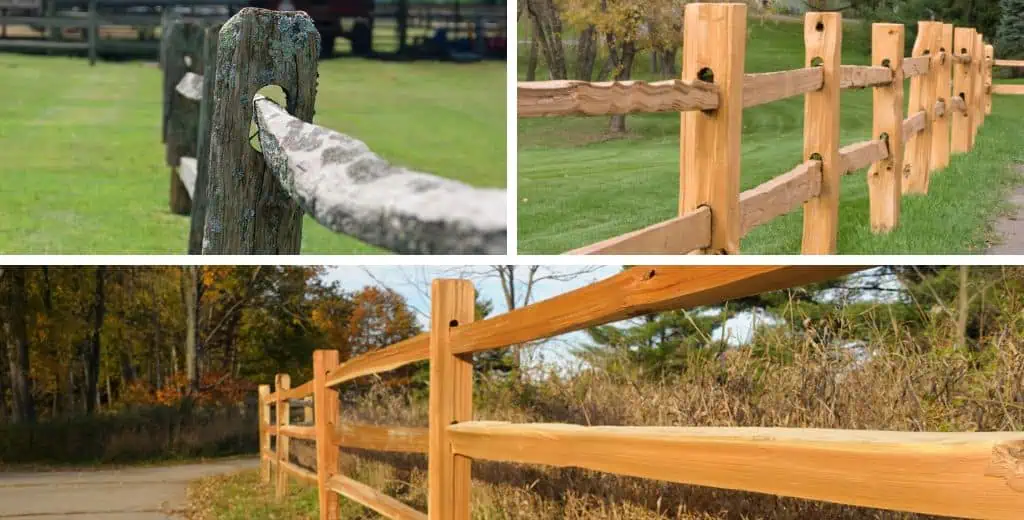
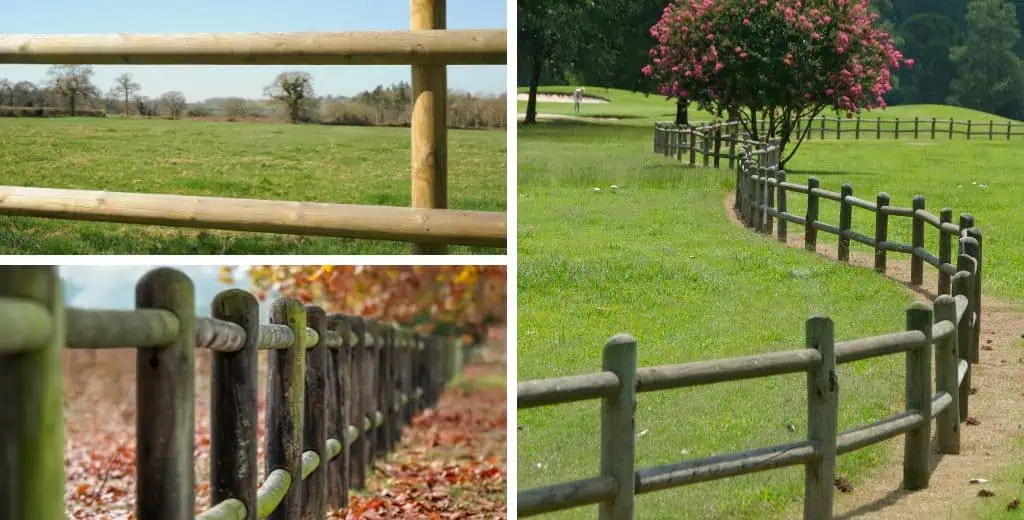
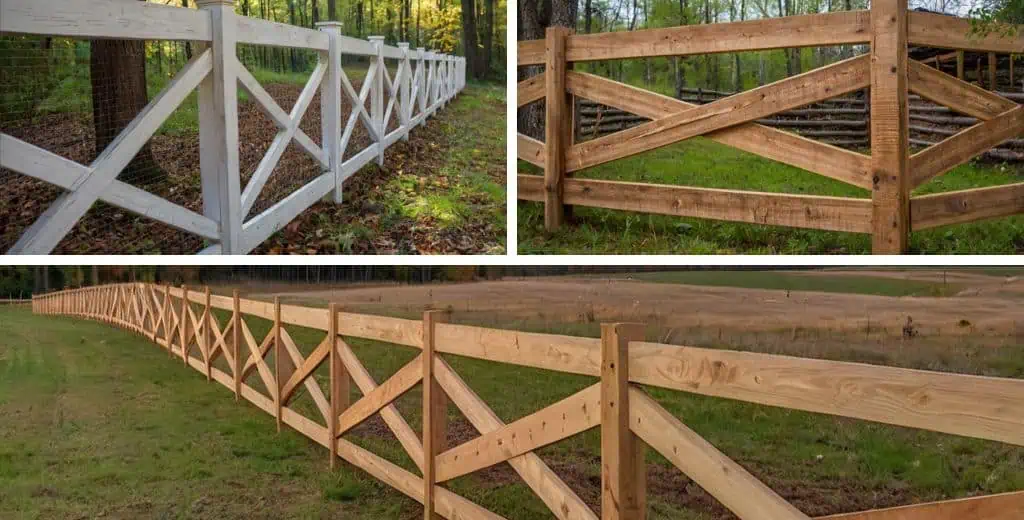
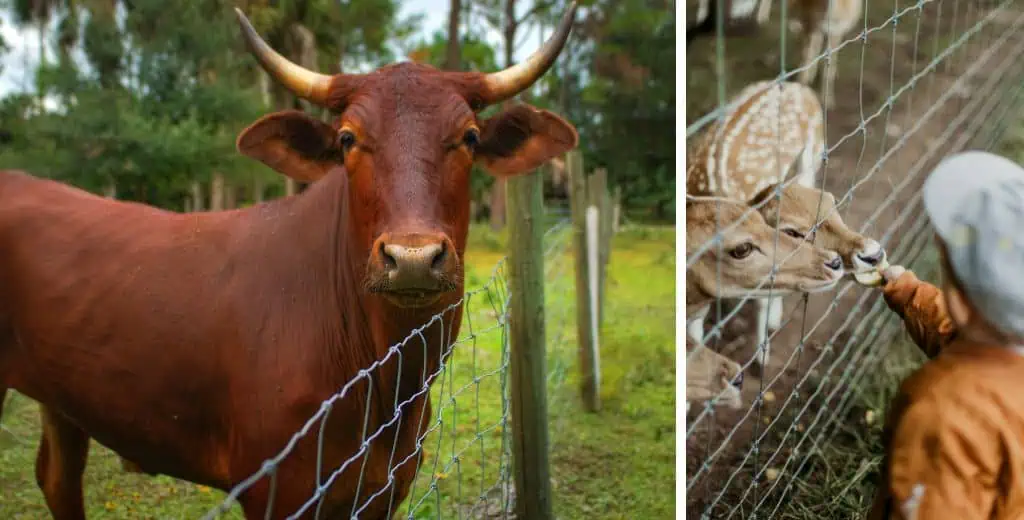
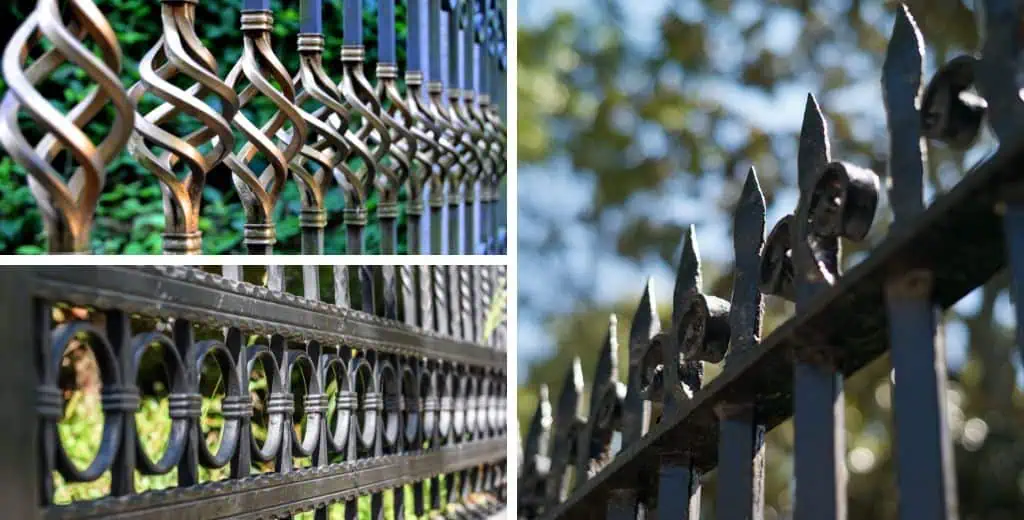
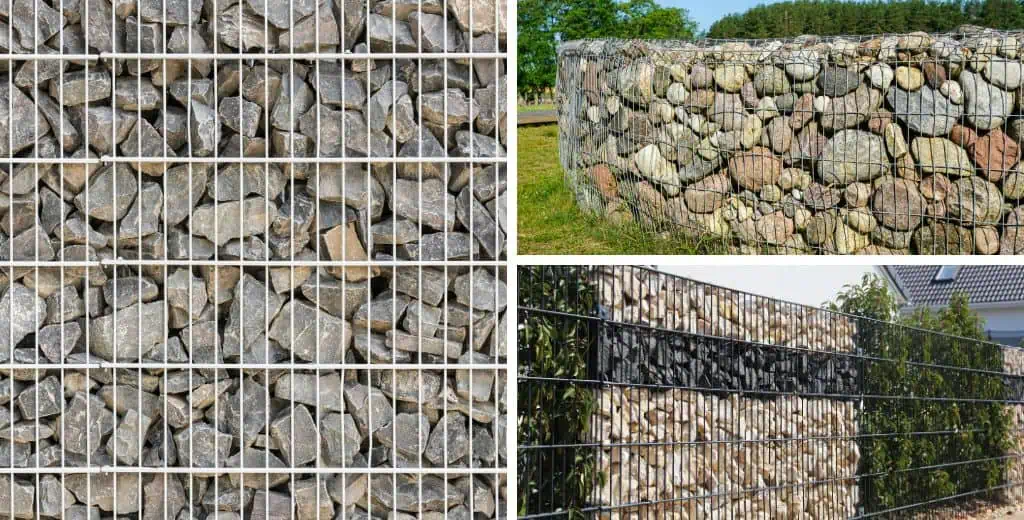
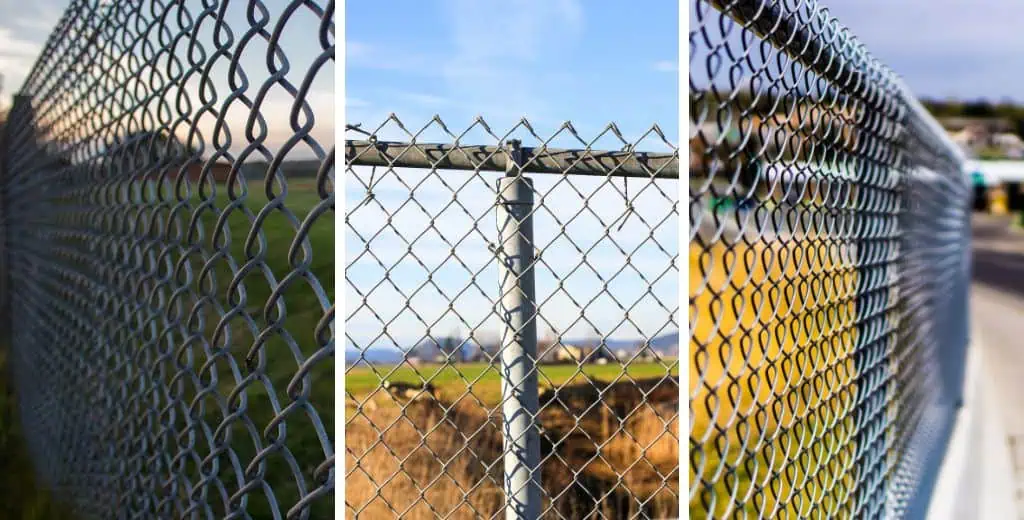
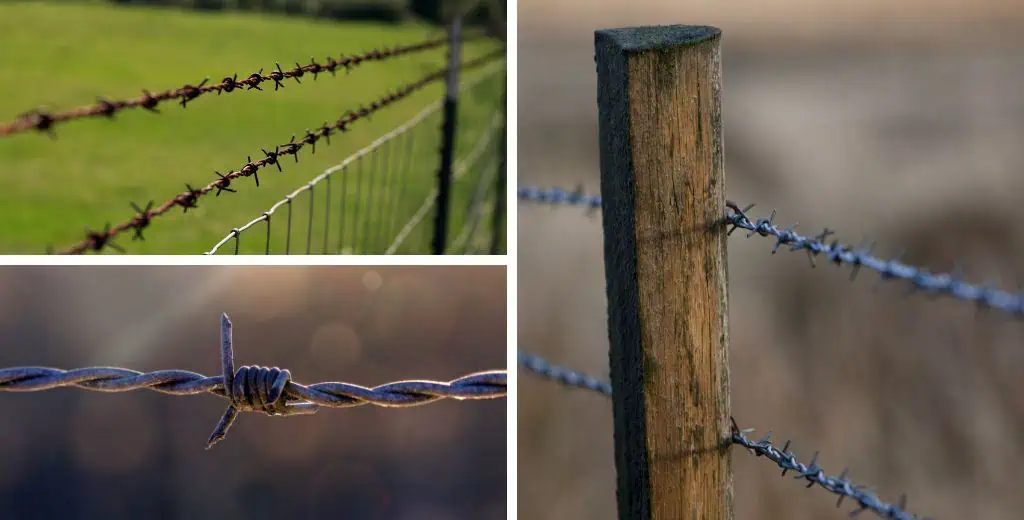
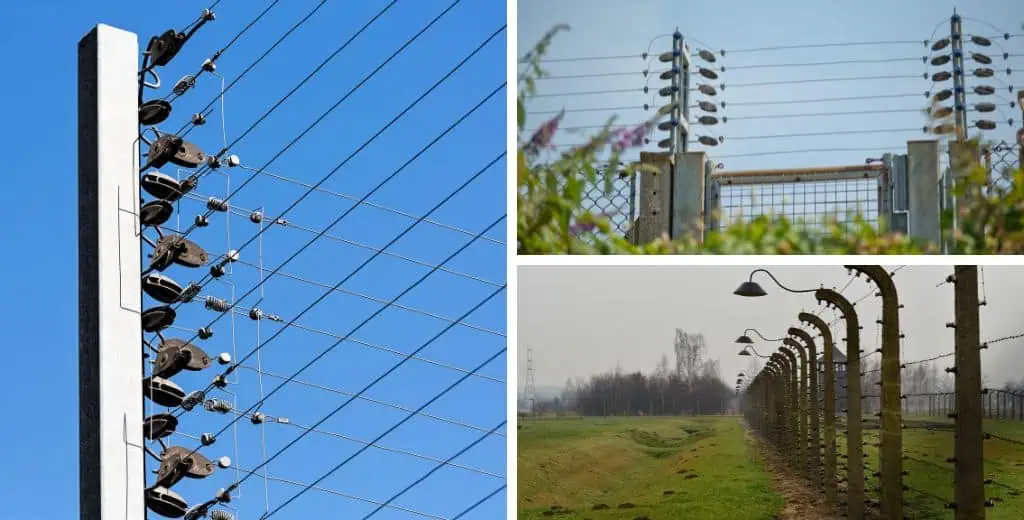
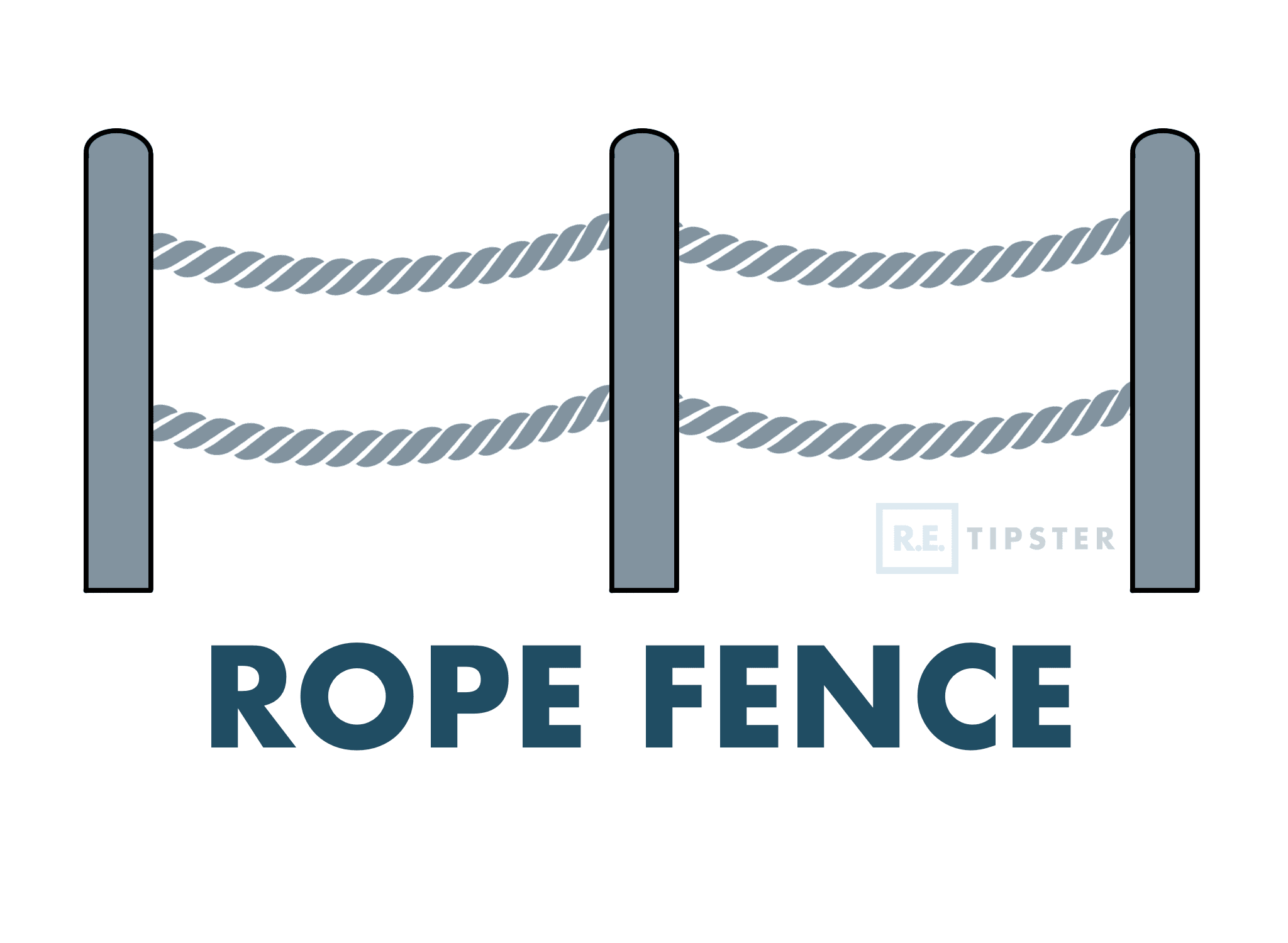 Whether you're channeling a seaside boardwalk in the Hamptons or creating laid-back vibes in your garden, rope fencing brings that casual maritime charm to any space. These fence styles use thick marine-grade rope (usually 1 or 2 inches thick) strung between posts to create an informal boundary that practically begs you to slow down and enjoy life.
Whether you're channeling a seaside boardwalk in the Hamptons or creating laid-back vibes in your garden, rope fencing brings that casual maritime charm to any space. These fence styles use thick marine-grade rope (usually 1 or 2 inches thick) strung between posts to create an informal boundary that practically begs you to slow down and enjoy life.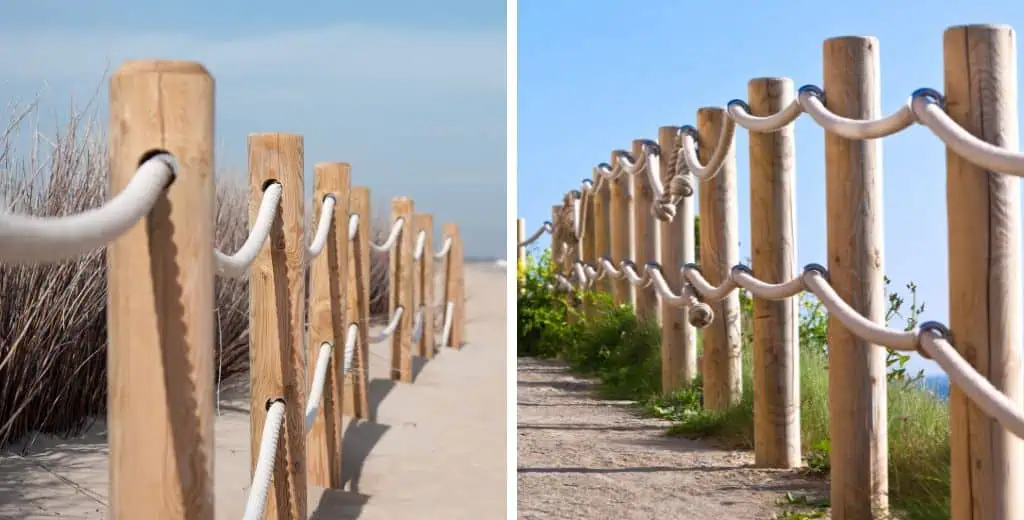
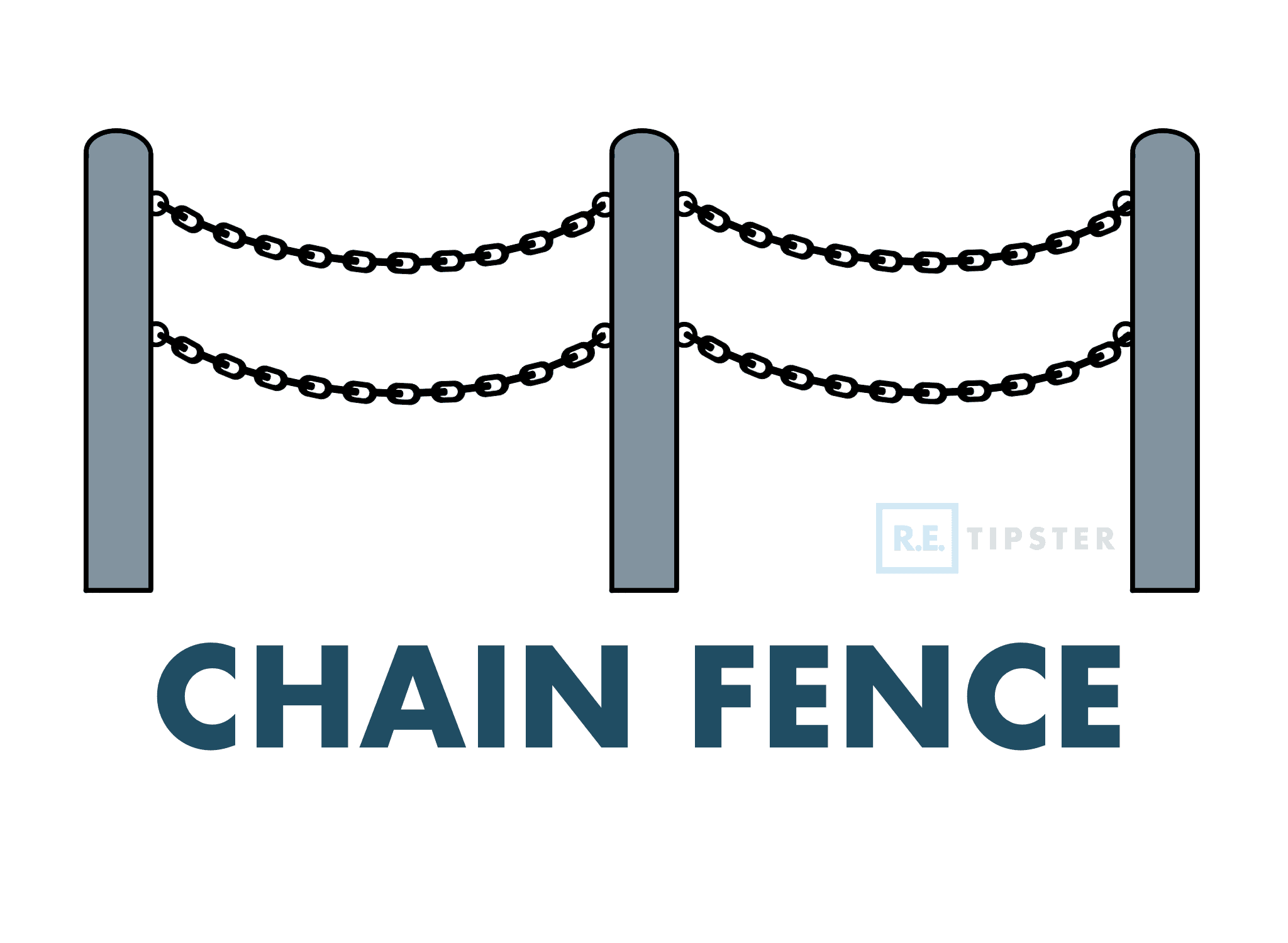 Remember playing with paper chains as a kid? Imagine that concept reimagined in steel and given an architectural upgrade. Chain fences bring a touch of industrial elegance to outdoor spaces, using suspended chains between posts to create boundaries that are more suggestion than barrier. This fence type isn't as expensive as they look, too, proving that sometimes less really is more.
Remember playing with paper chains as a kid? Imagine that concept reimagined in steel and given an architectural upgrade. Chain fences bring a touch of industrial elegance to outdoor spaces, using suspended chains between posts to create boundaries that are more suggestion than barrier. This fence type isn't as expensive as they look, too, proving that sometimes less really is more.
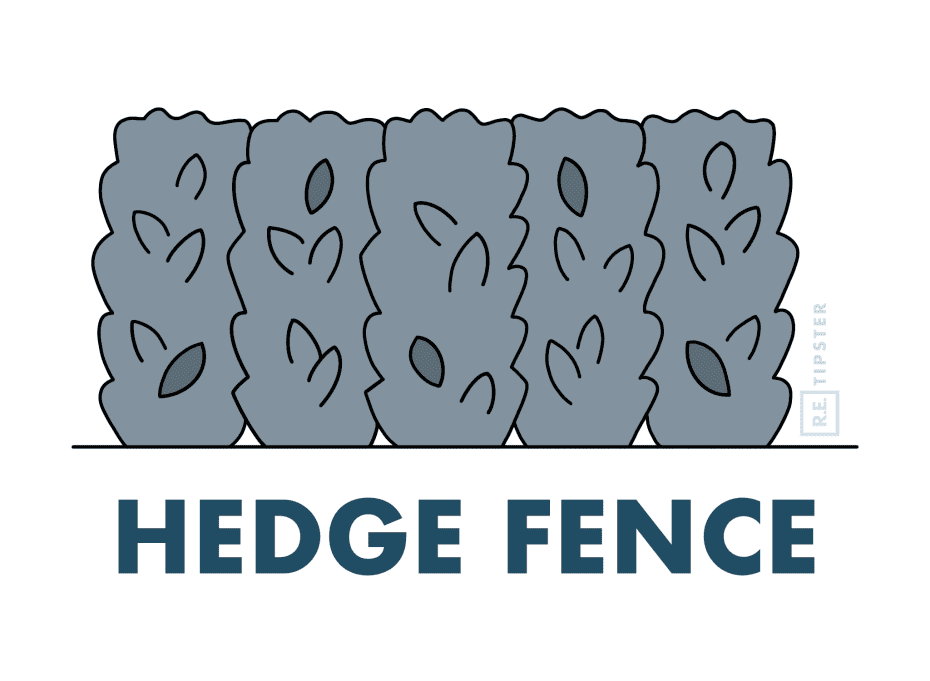 Nature has been in the fencing business long before humans figured out how to split rails or weave wire. Living fences—essentially strategic plantings of shrubs, trees, or vines—have been defining boundaries since medieval Europe, where hedgerows created the patchwork landscapes we still see today. While you might have to shell out a pretty penny to a landscaper (plus patience while it grows), think of it as investing in a fence that appreciates in value and actually improves with age.
Nature has been in the fencing business long before humans figured out how to split rails or weave wire. Living fences—essentially strategic plantings of shrubs, trees, or vines—have been defining boundaries since medieval Europe, where hedgerows created the patchwork landscapes we still see today. While you might have to shell out a pretty penny to a landscaper (plus patience while it grows), think of it as investing in a fence that appreciates in value and actually improves with age.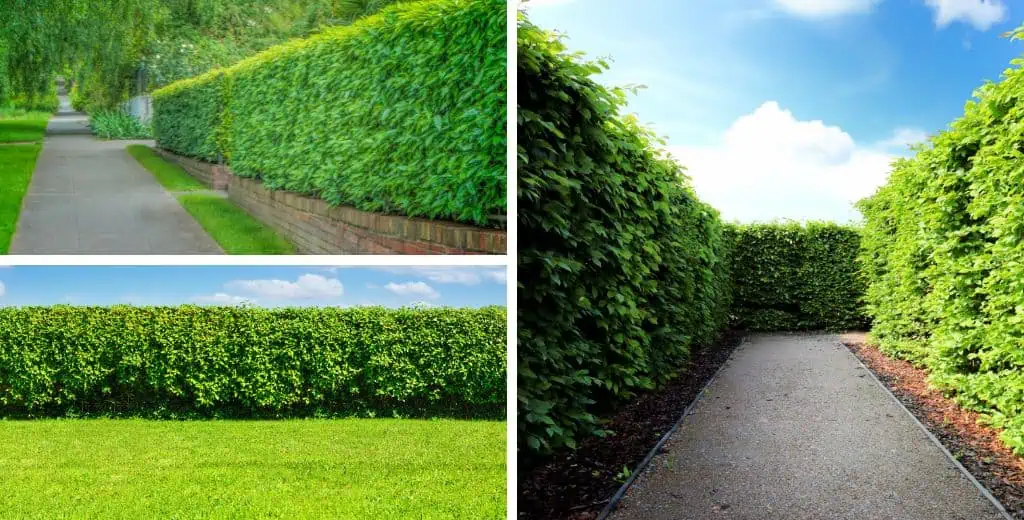
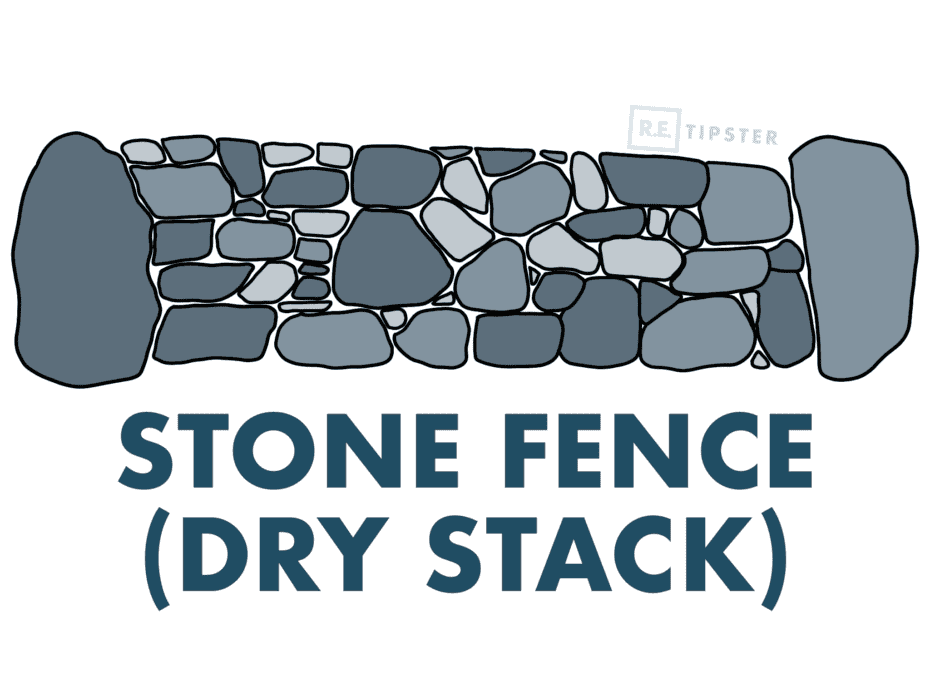 Walk through the Scottish Highlands or New England's countryside, and you'll find dry stack walls that have stood for centuries without a drop of mortar. This ancient building technique—dating back over 5,000 years—relies purely on the careful arrangement of stones, with each piece locked in place by its neighbors like a giant, heavy-duty puzzle.
Walk through the Scottish Highlands or New England's countryside, and you'll find dry stack walls that have stood for centuries without a drop of mortar. This ancient building technique—dating back over 5,000 years—relies purely on the careful arrangement of stones, with each piece locked in place by its neighbors like a giant, heavy-duty puzzle.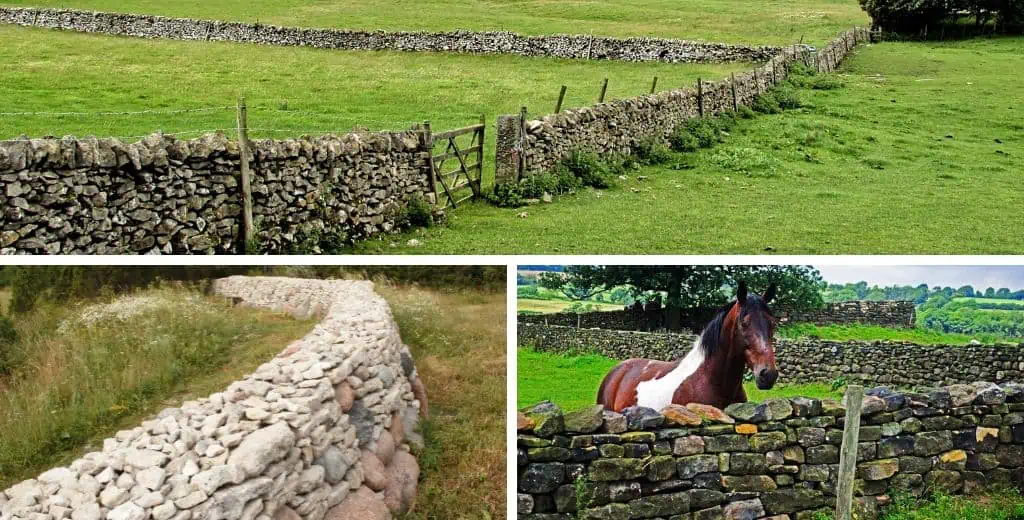
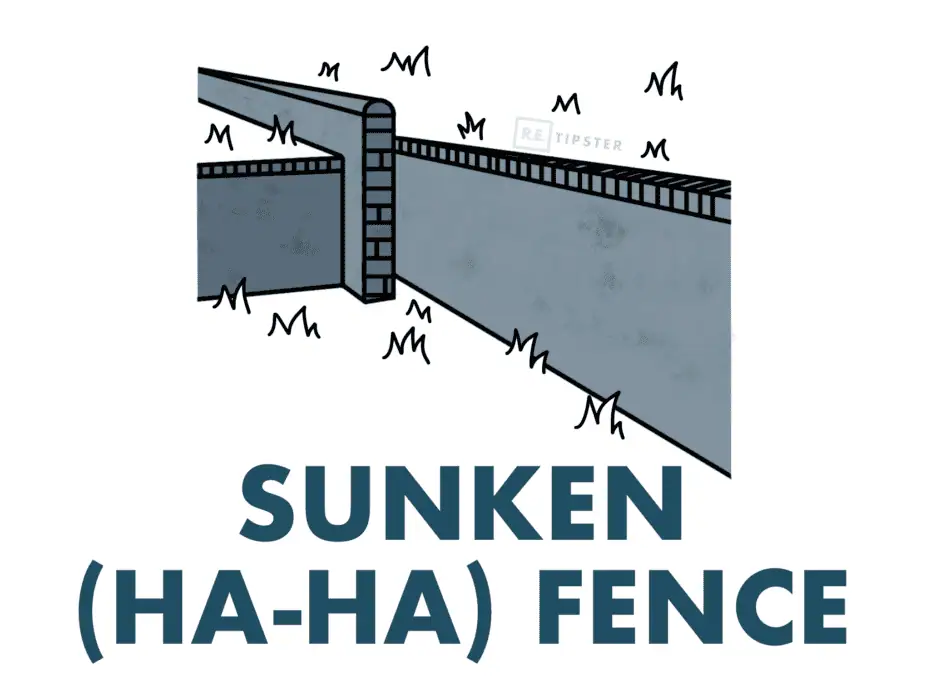 Ever visited an English estate and wondered how they keep the sheep off the lawn without any visible fence? Meet the ha-ha fence—
Ever visited an English estate and wondered how they keep the sheep off the lawn without any visible fence? Meet the ha-ha fence—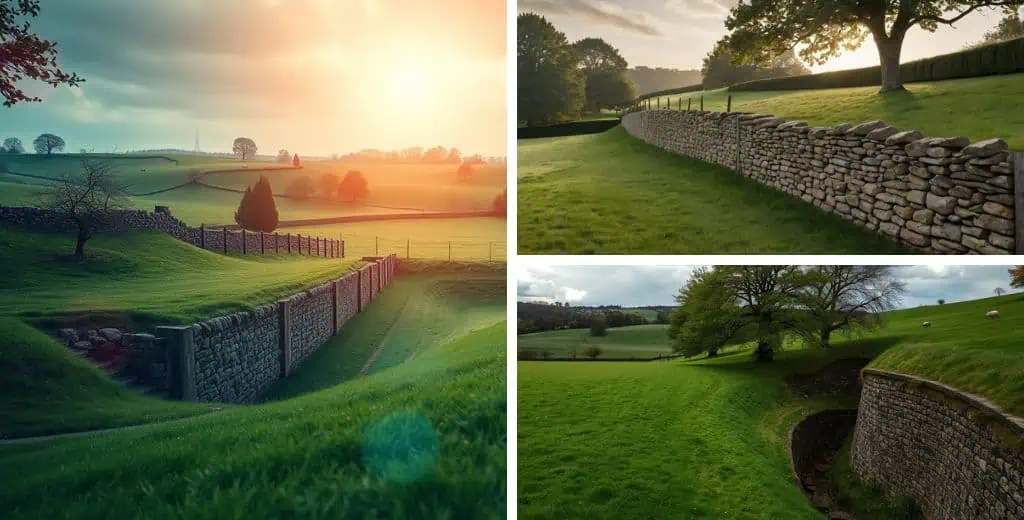
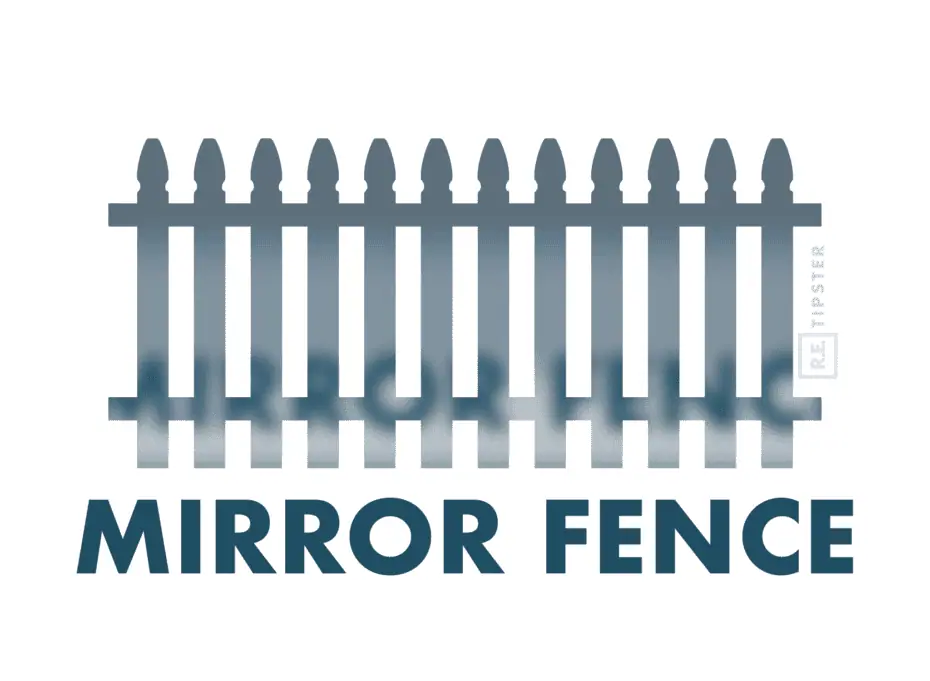 If Salvador Dalí designed fences, this would be his masterpiece. Mirror fencing is the illusionist of the landscape world, making boundaries seemingly vanish into thin air while reflecting clouds, trees, and whatever else wanders by. At a jaw-dropping $200-400 per linear foot installed, it's the Ferrari of fences—expensive, head-turning, and definitely not for everyone. But oh, what a conversation starter!
If Salvador Dalí designed fences, this would be his masterpiece. Mirror fencing is the illusionist of the landscape world, making boundaries seemingly vanish into thin air while reflecting clouds, trees, and whatever else wanders by. At a jaw-dropping $200-400 per linear foot installed, it's the Ferrari of fences—expensive, head-turning, and definitely not for everyone. But oh, what a conversation starter!
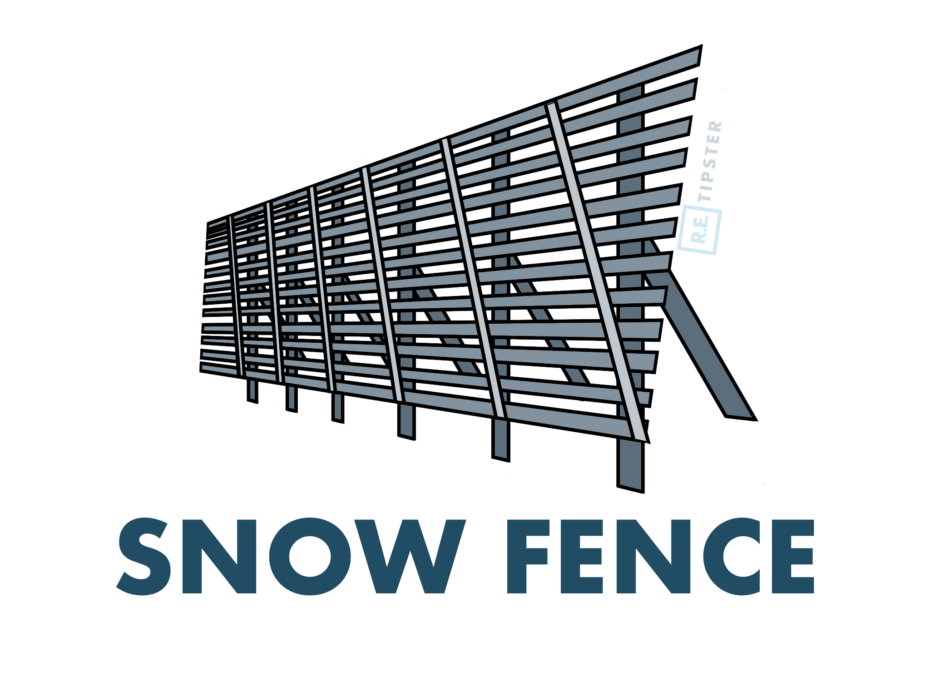 If you've ever driven through the Midwest in winter, you've seen these utilitarian barriers standing guard along highways like frozen picket lines. The science is simple but clever: the semi-porous design allows enough wind through to drop its snowy cargo right where we want it—away from roads, driveways, and walkways. In other words, a snow fence doesn't stop the snow, but it does tell the snow where to go.
If you've ever driven through the Midwest in winter, you've seen these utilitarian barriers standing guard along highways like frozen picket lines. The science is simple but clever: the semi-porous design allows enough wind through to drop its snowy cargo right where we want it—away from roads, driveways, and walkways. In other words, a snow fence doesn't stop the snow, but it does tell the snow where to go.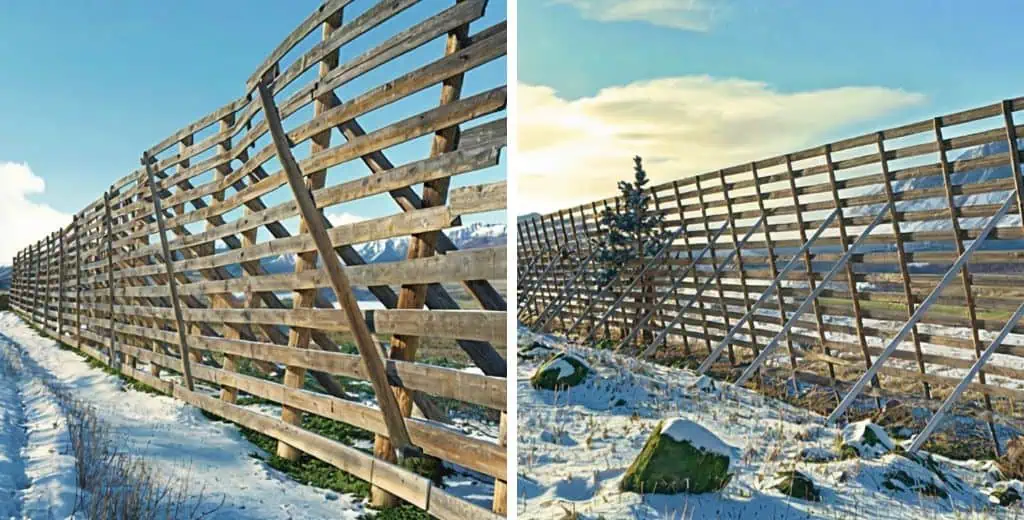
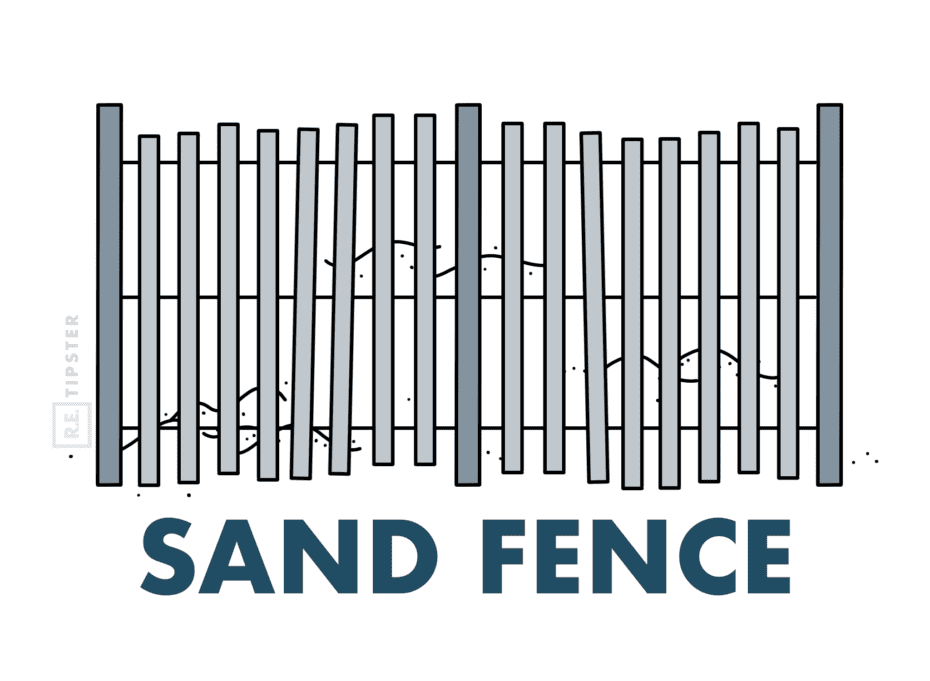 A snow and sand fence are similar fence styles. Like their winter cousins, sand fences use a simple slatted design to manage nature's most mobile elements—in this case, sand instead of snow. Made from wooden slats connected by horizontal wires, these temporary barriers are critical tools in coastal preservation, helping to build and stabilize dunes that protect our shorelines. Some sand fences start at less than a dollar per linear foot, exclusive of installation, making them an economical solution for beach and dune management.
A snow and sand fence are similar fence styles. Like their winter cousins, sand fences use a simple slatted design to manage nature's most mobile elements—in this case, sand instead of snow. Made from wooden slats connected by horizontal wires, these temporary barriers are critical tools in coastal preservation, helping to build and stabilize dunes that protect our shorelines. Some sand fences start at less than a dollar per linear foot, exclusive of installation, making them an economical solution for beach and dune management.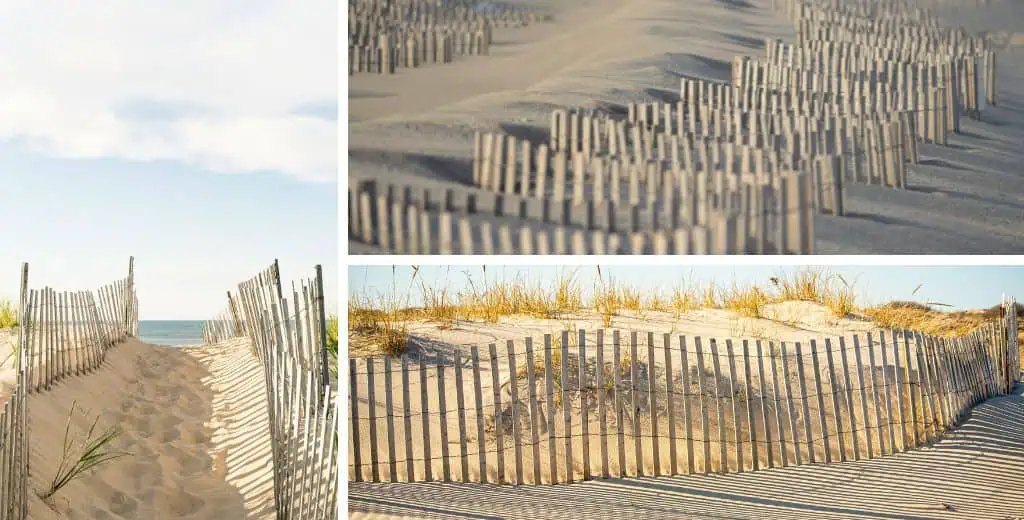



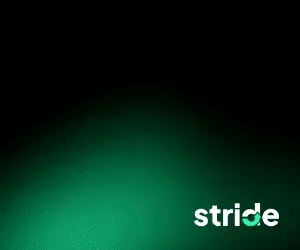



I found this to be a very interesting article, Seth. Still, I was a bit sad to find that the old “Buck and Rail” fence was not represented. It might not find a lot of popularity in suburban America these days, but it certainly had its day. Out here in the Mountain West regions, it was a solution to the problems of difficult terrain and impenetrable rocky ground.
Just one example: https://www.parmapostandpole.com/buck-fences-idaho/
Very interesting! Thanks for sharing, Jim. Not sure how we missed this one, but I can see many ways that this design would be useful.